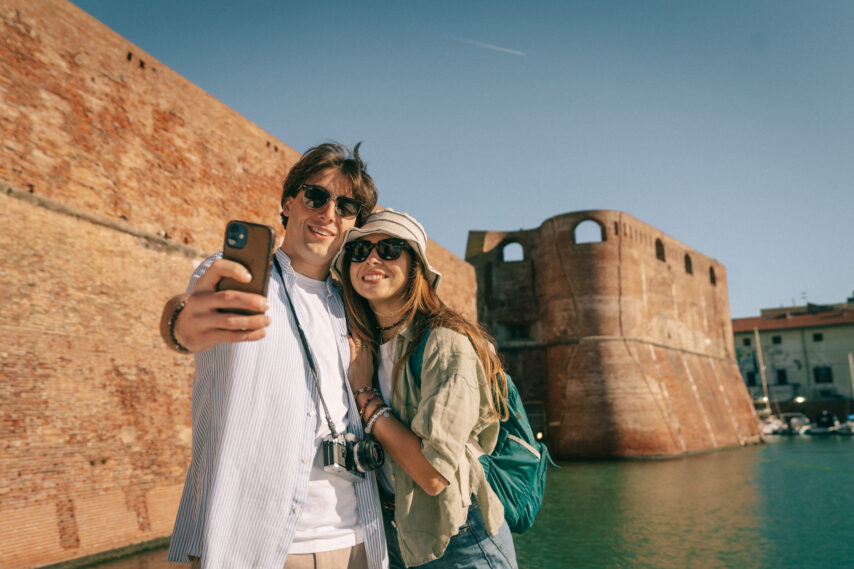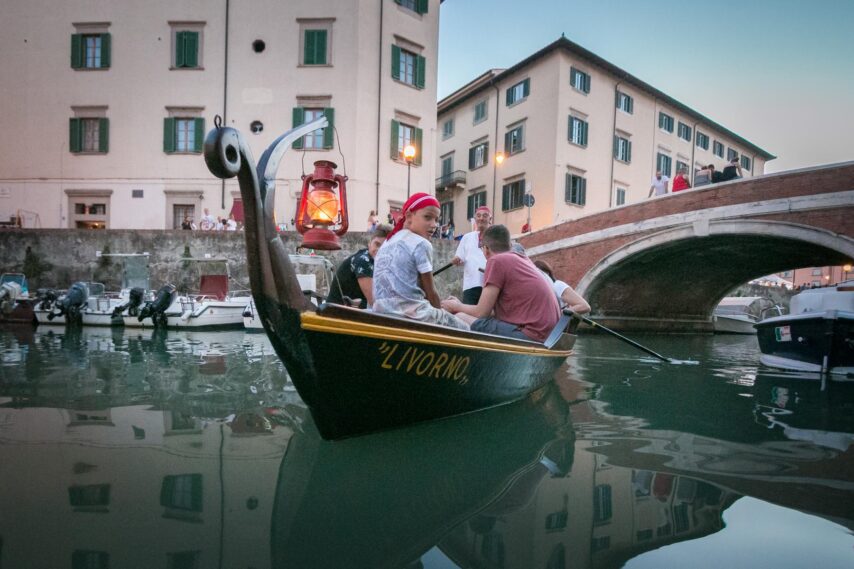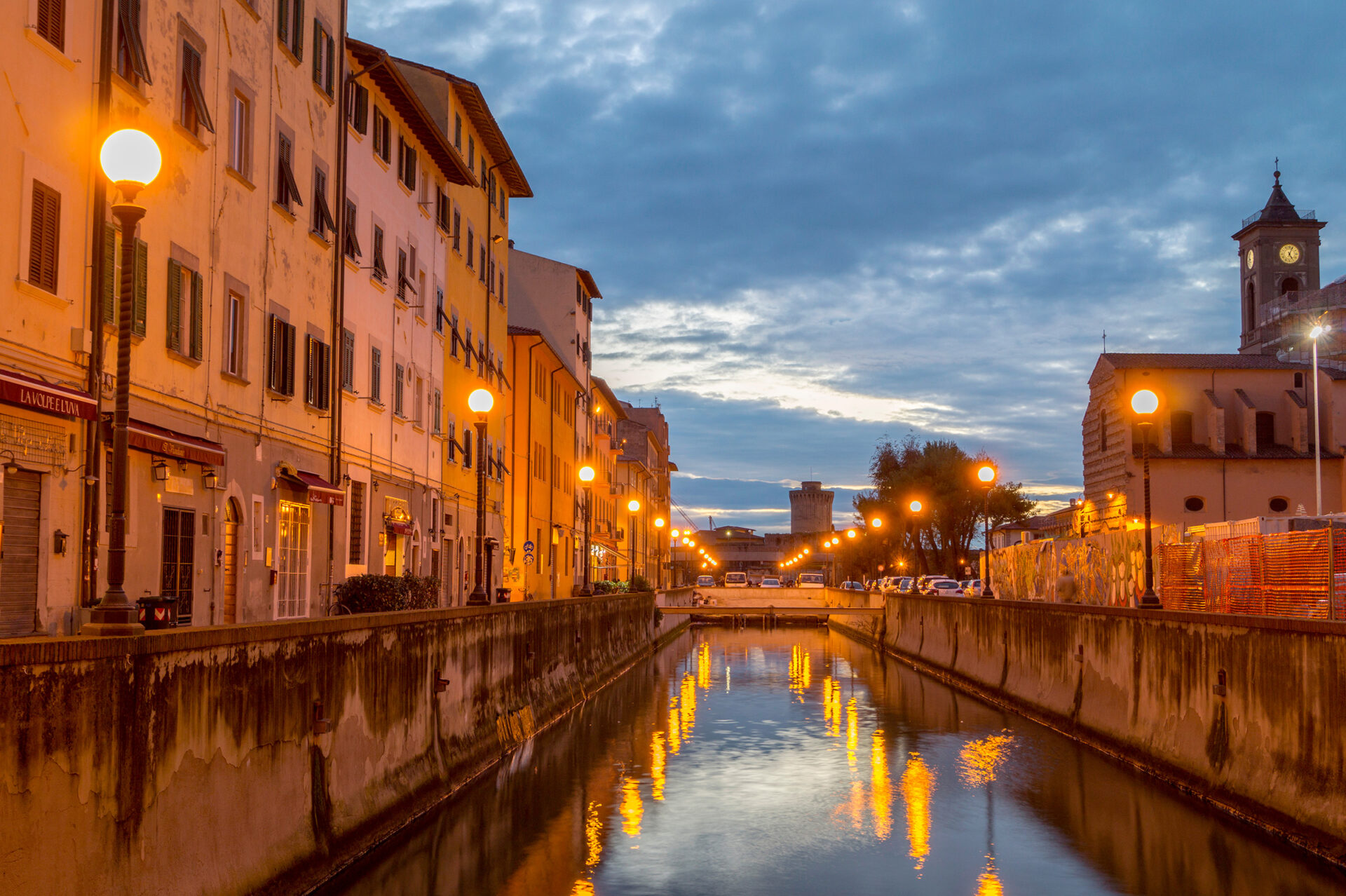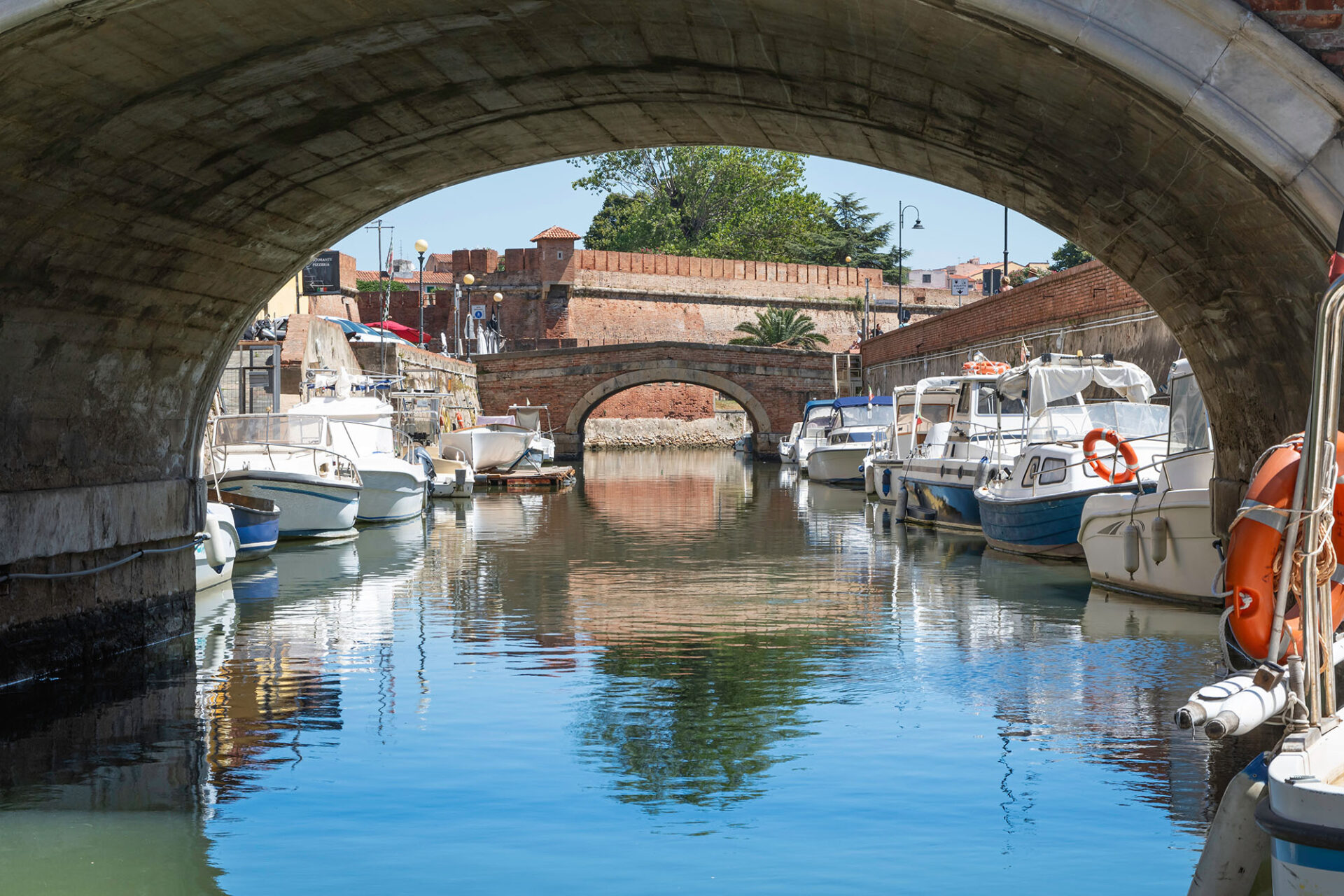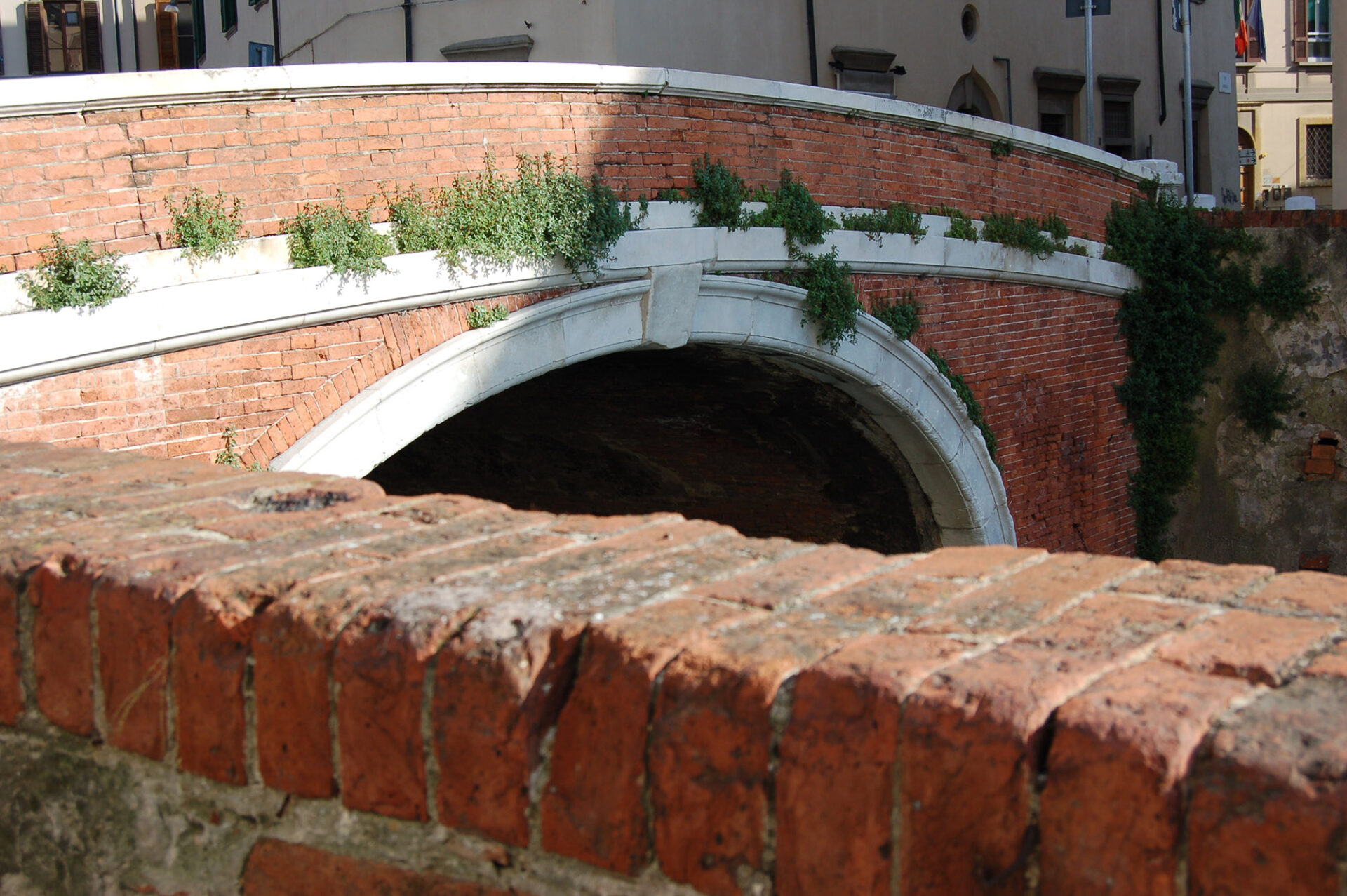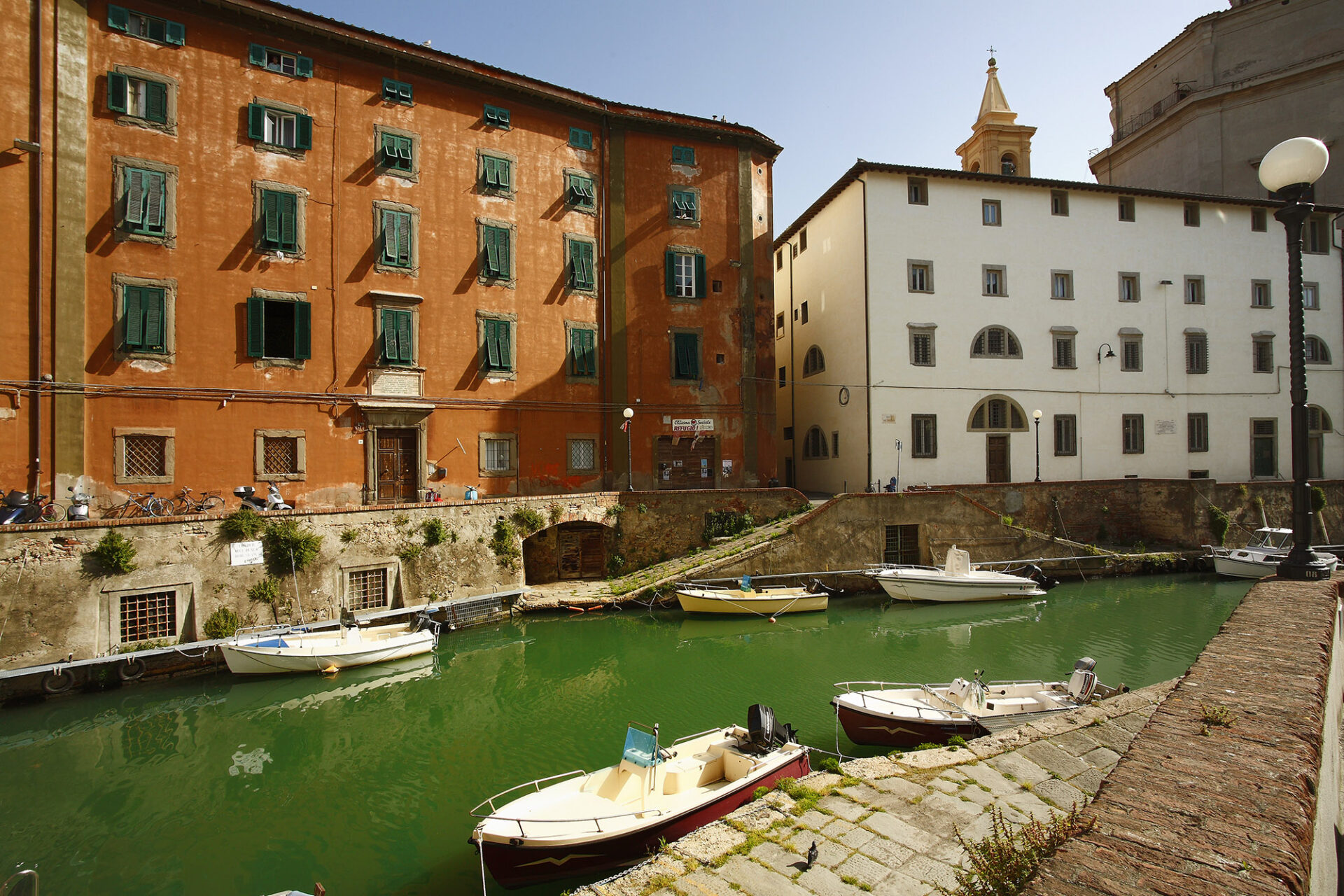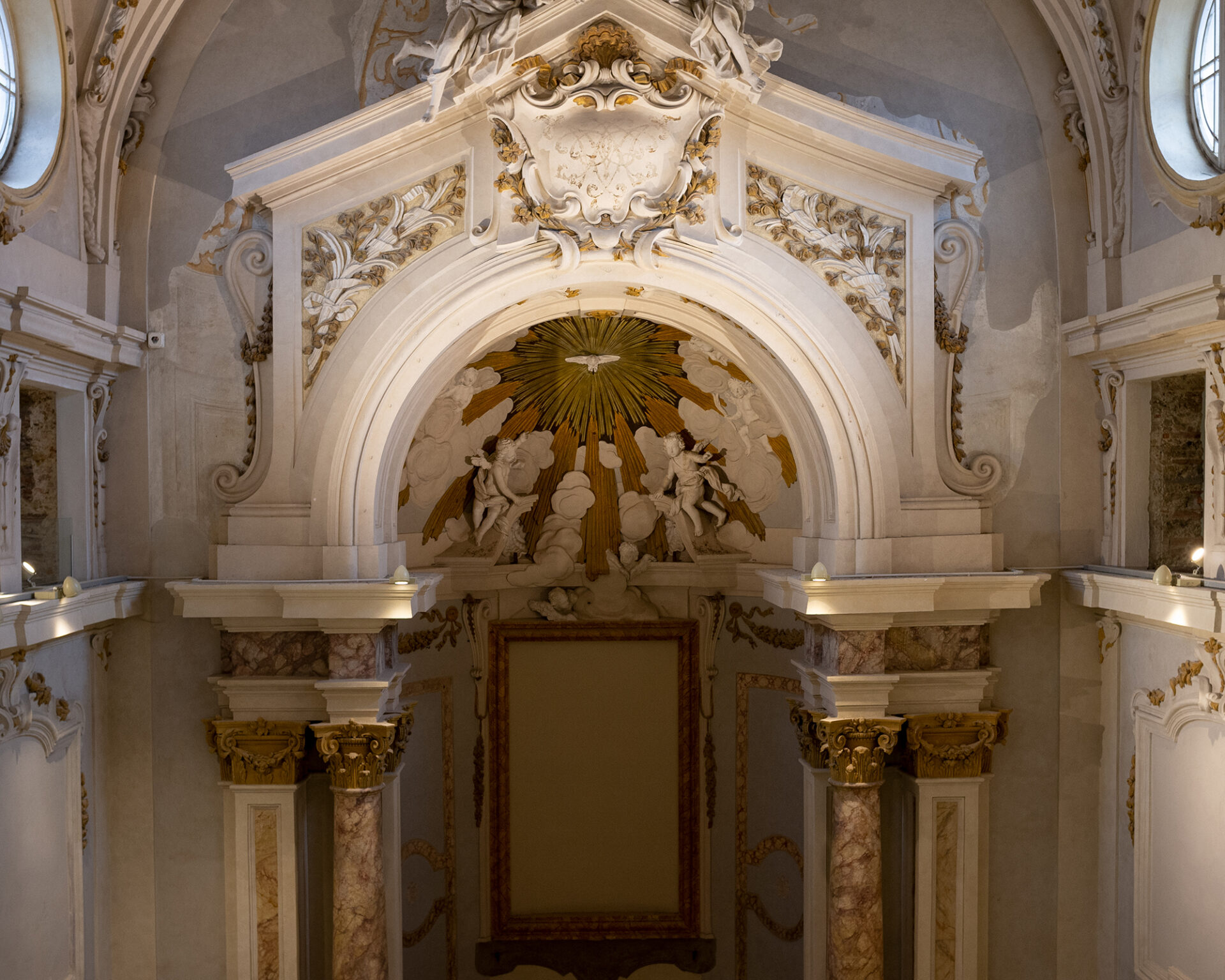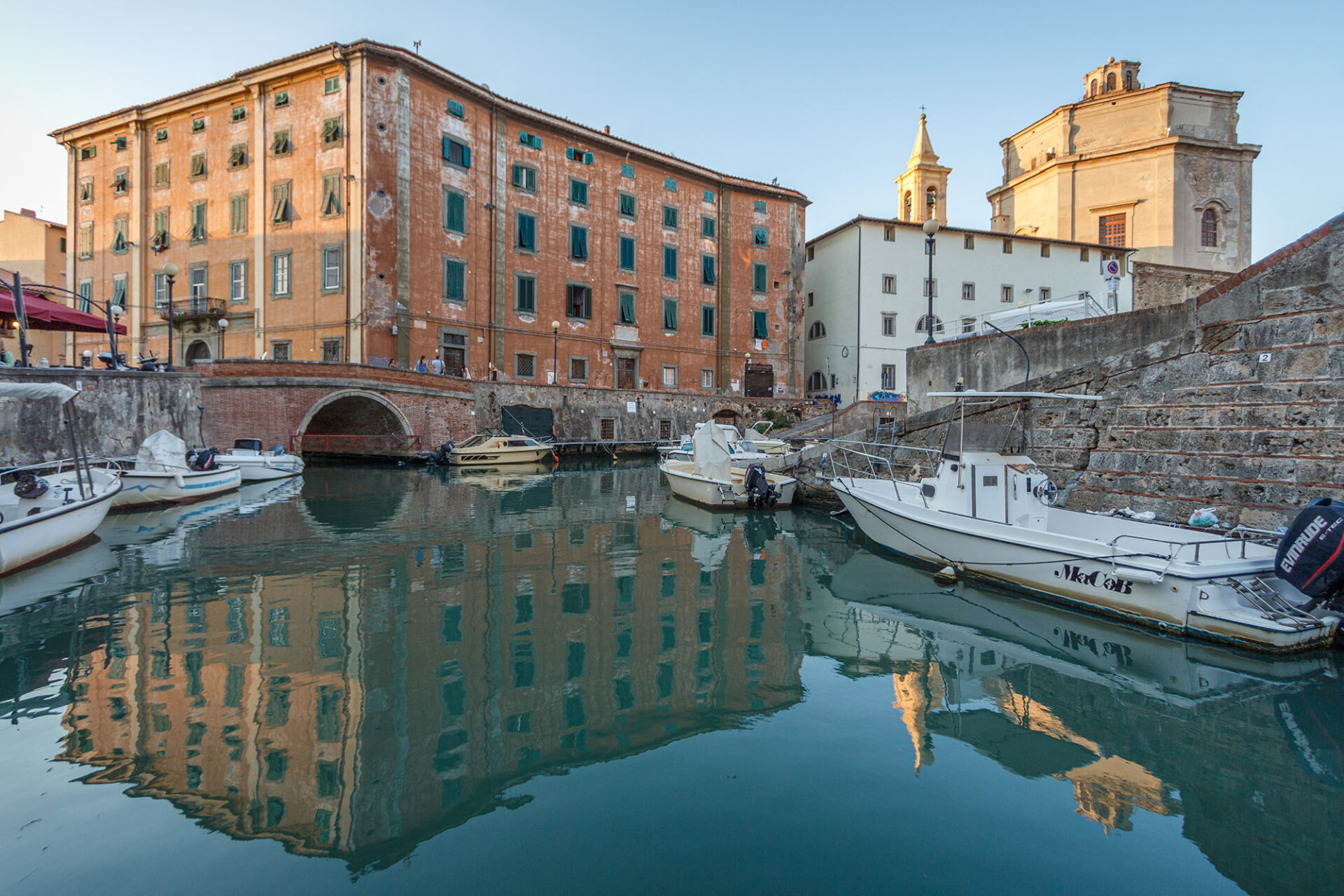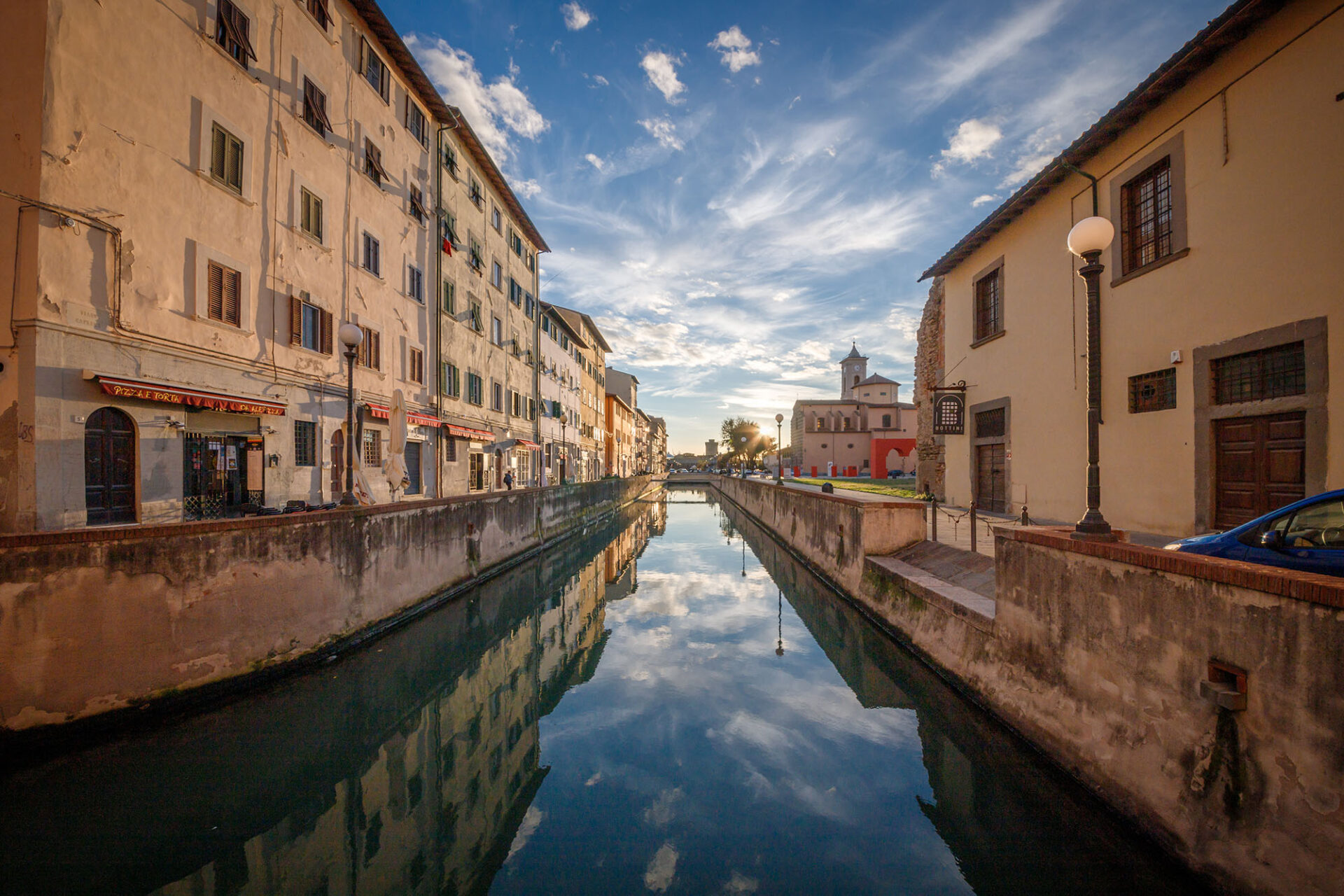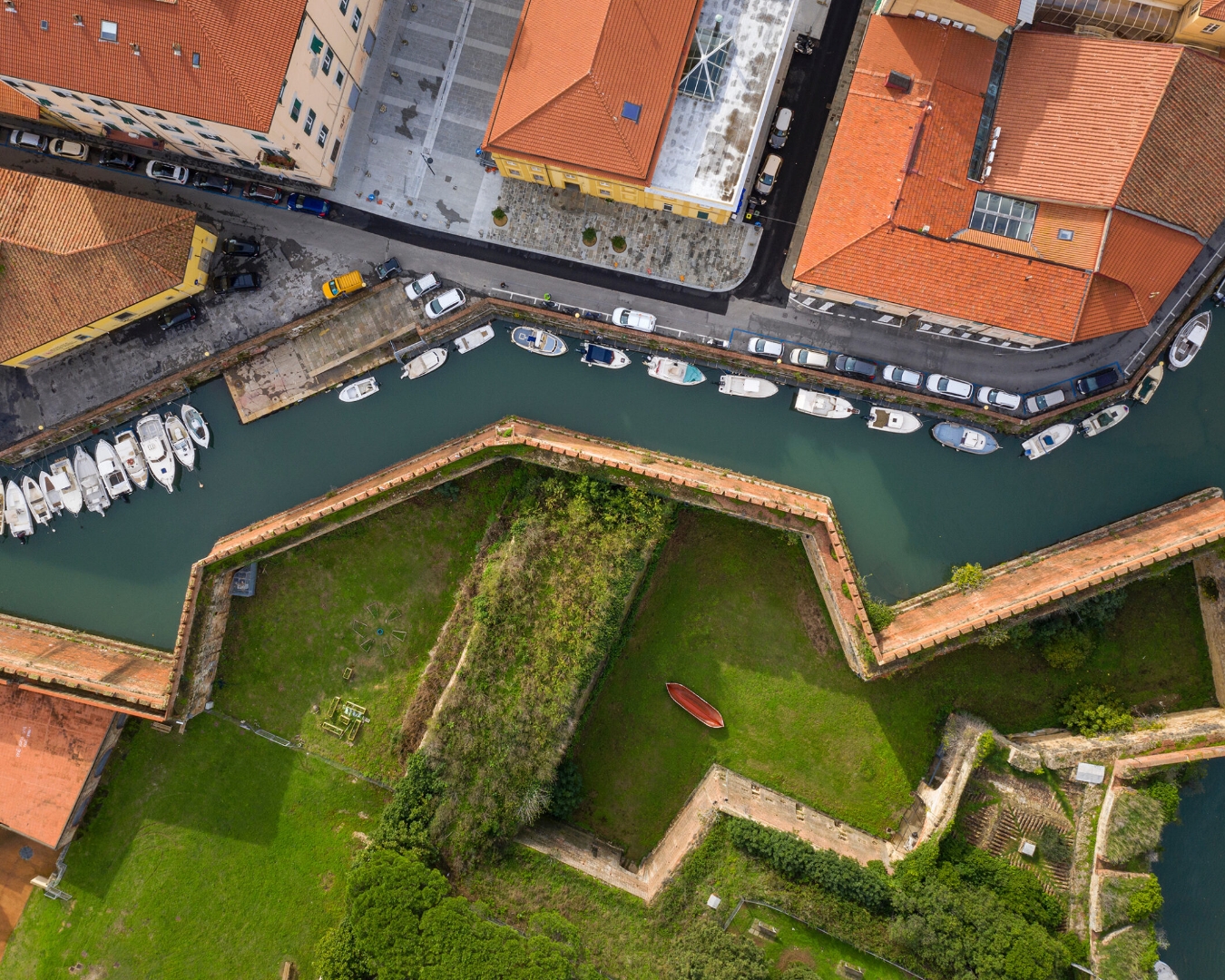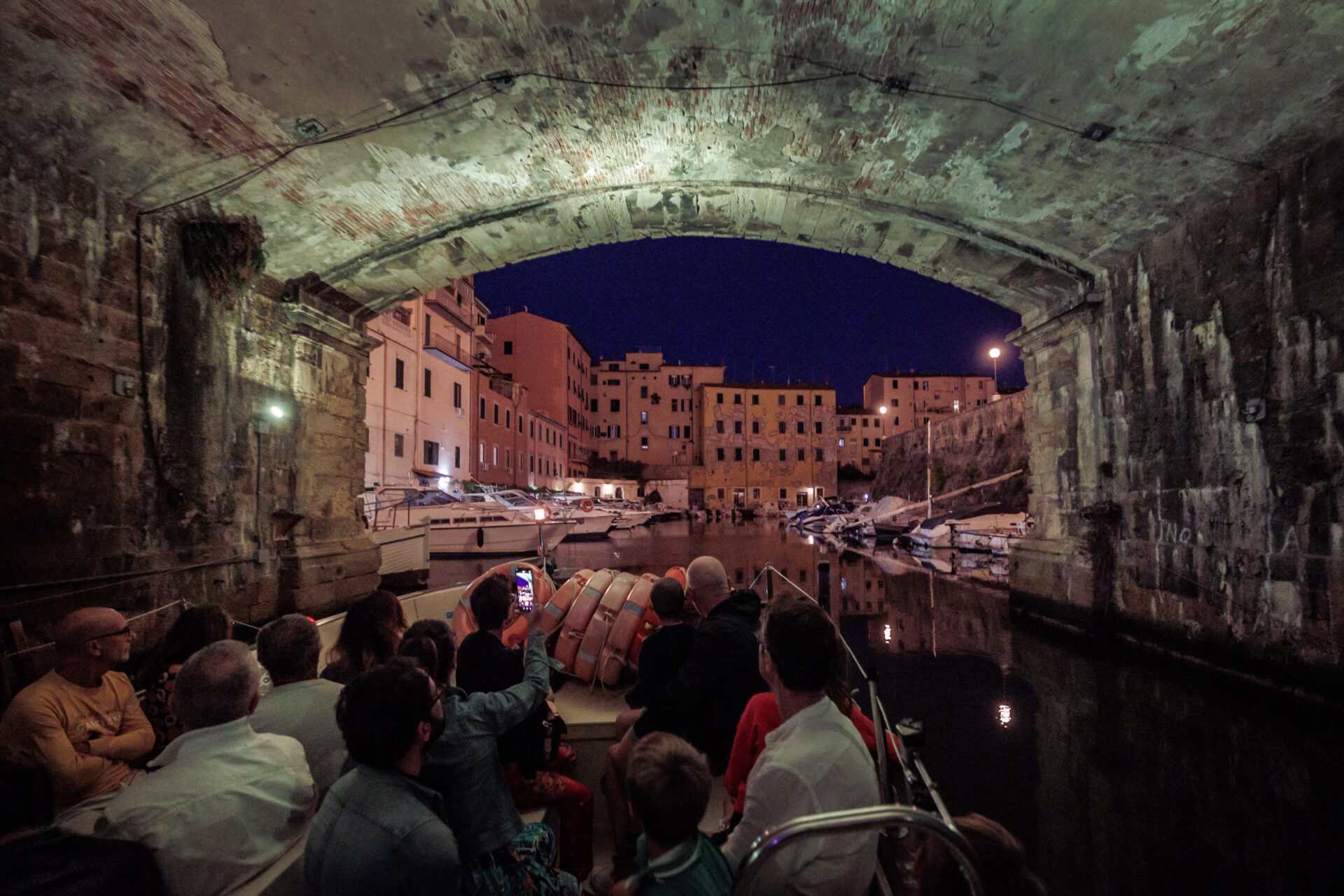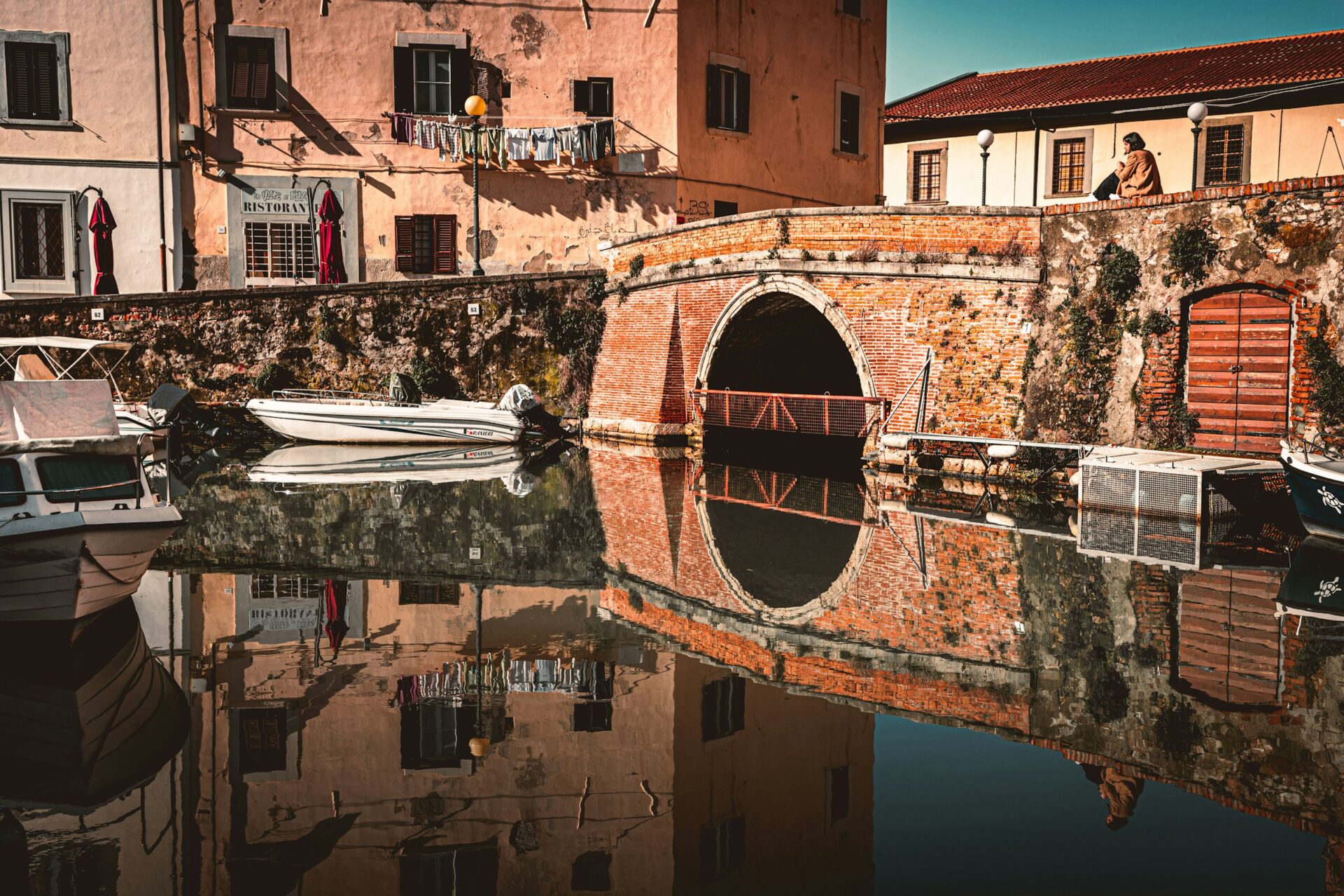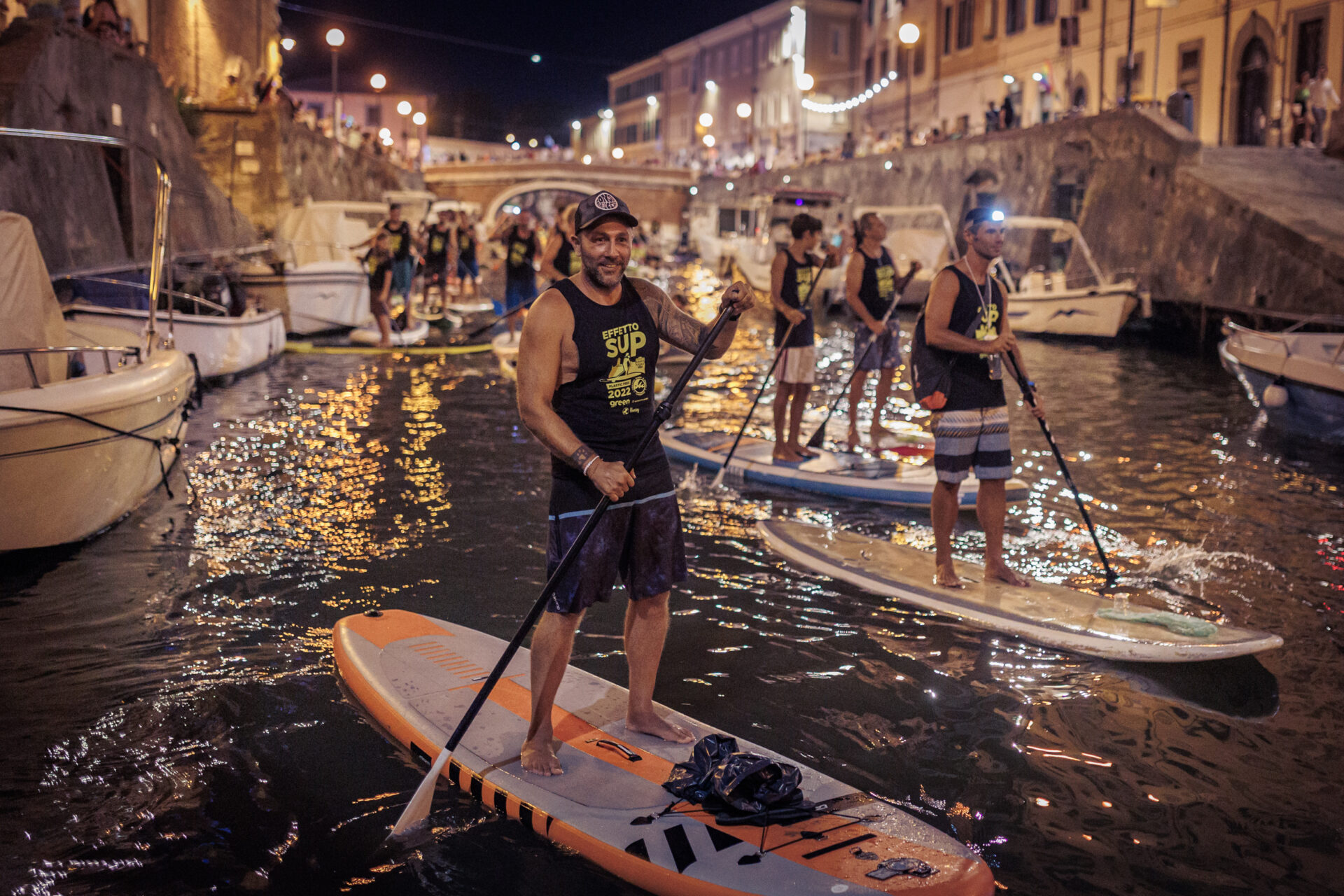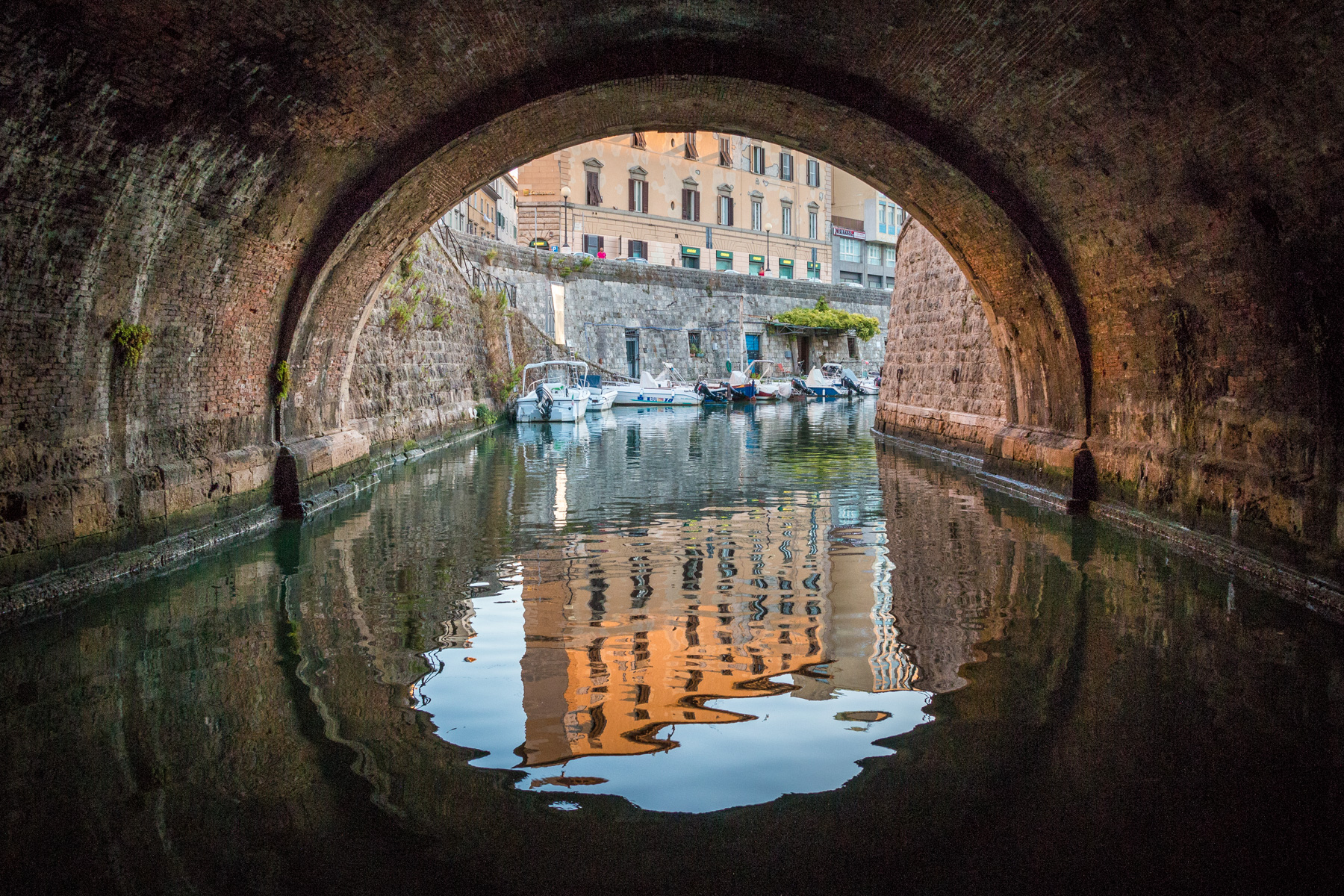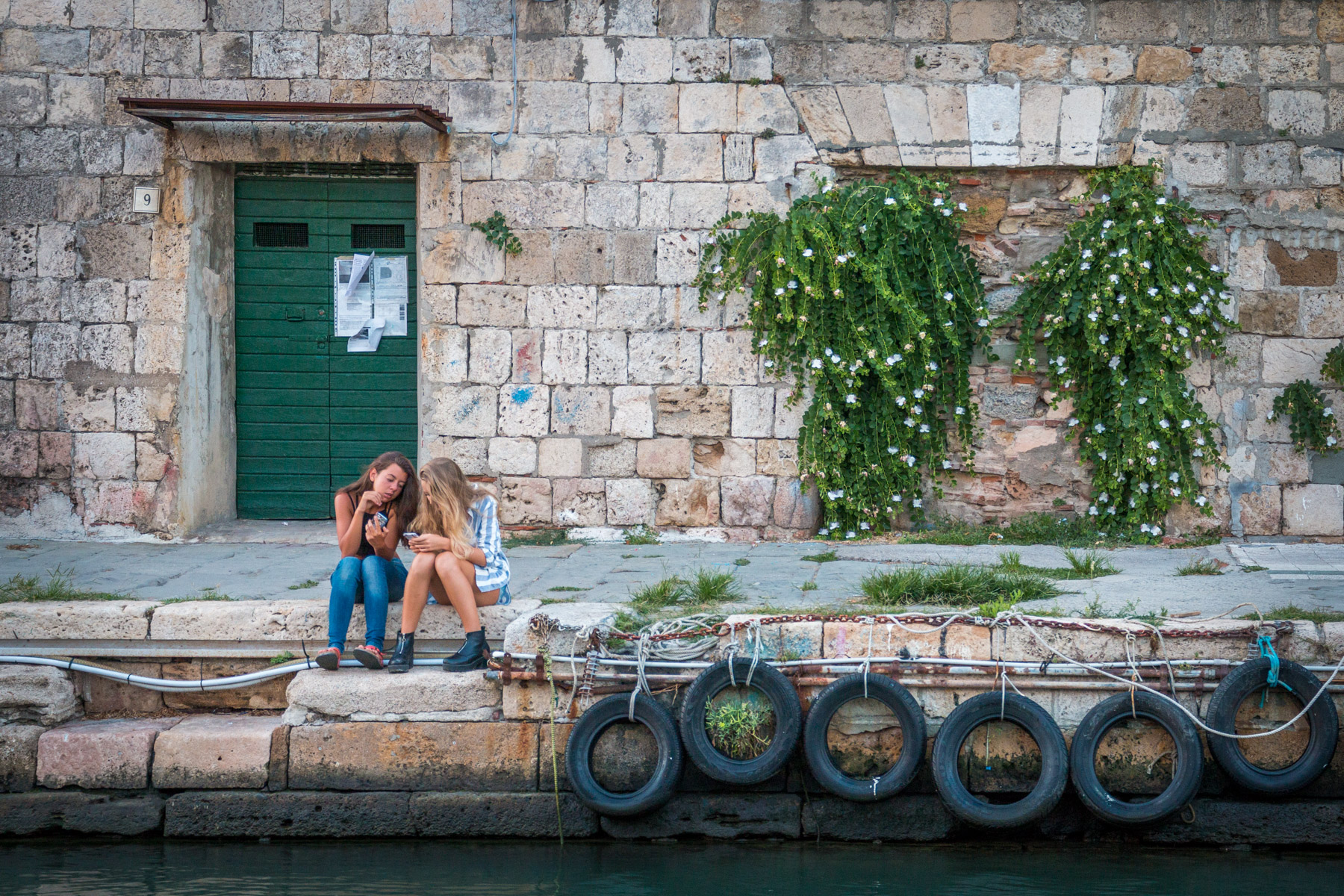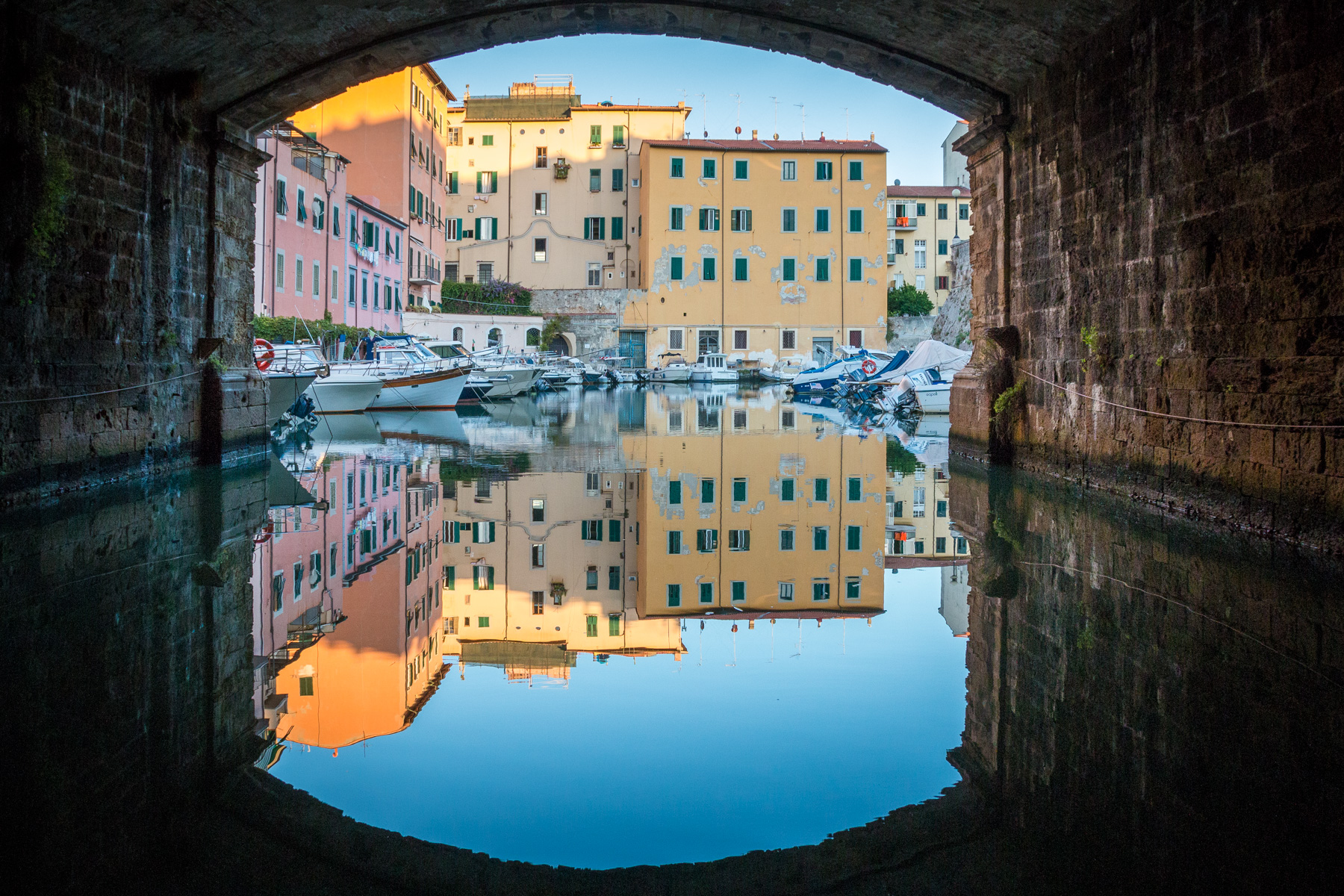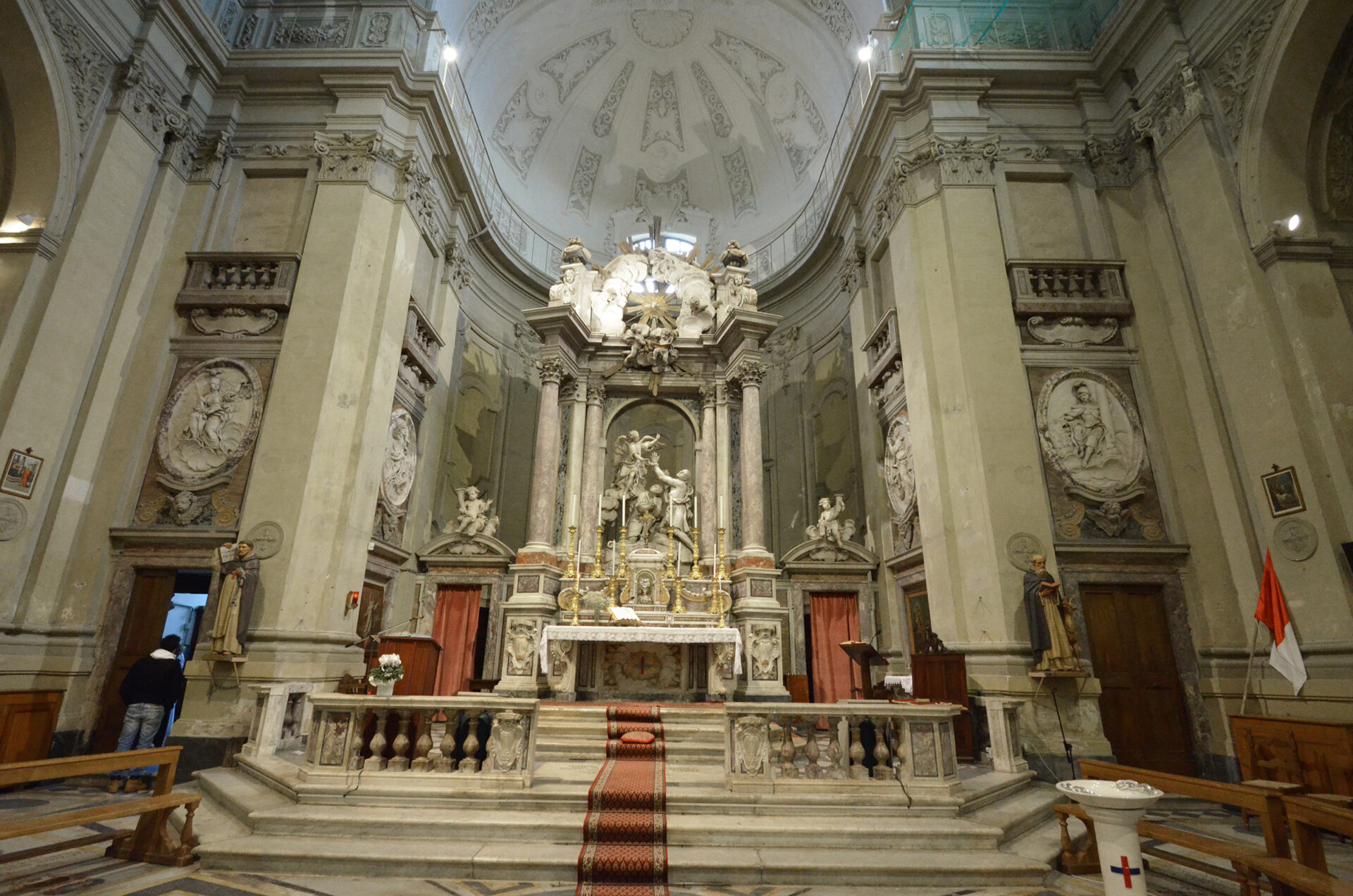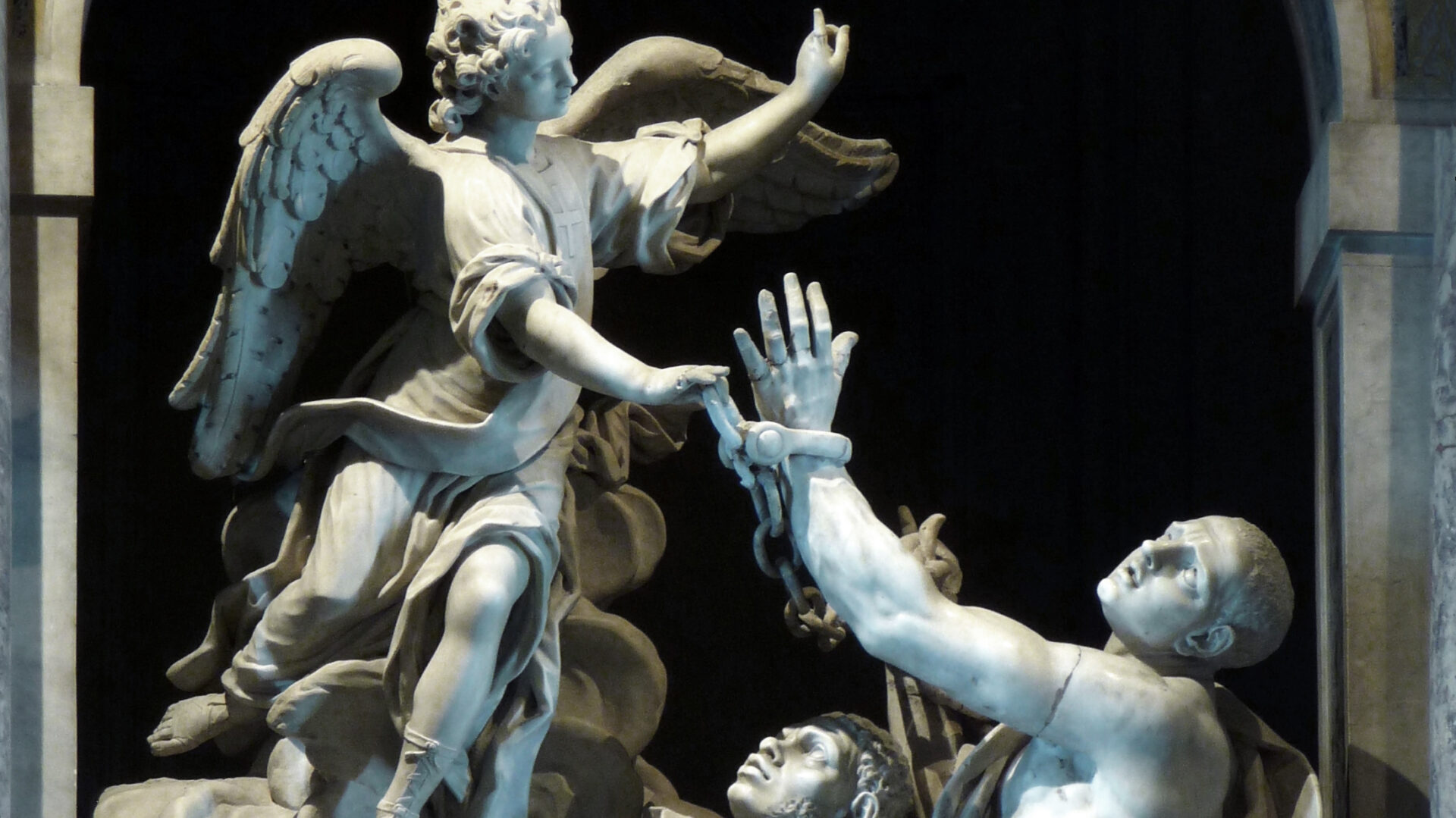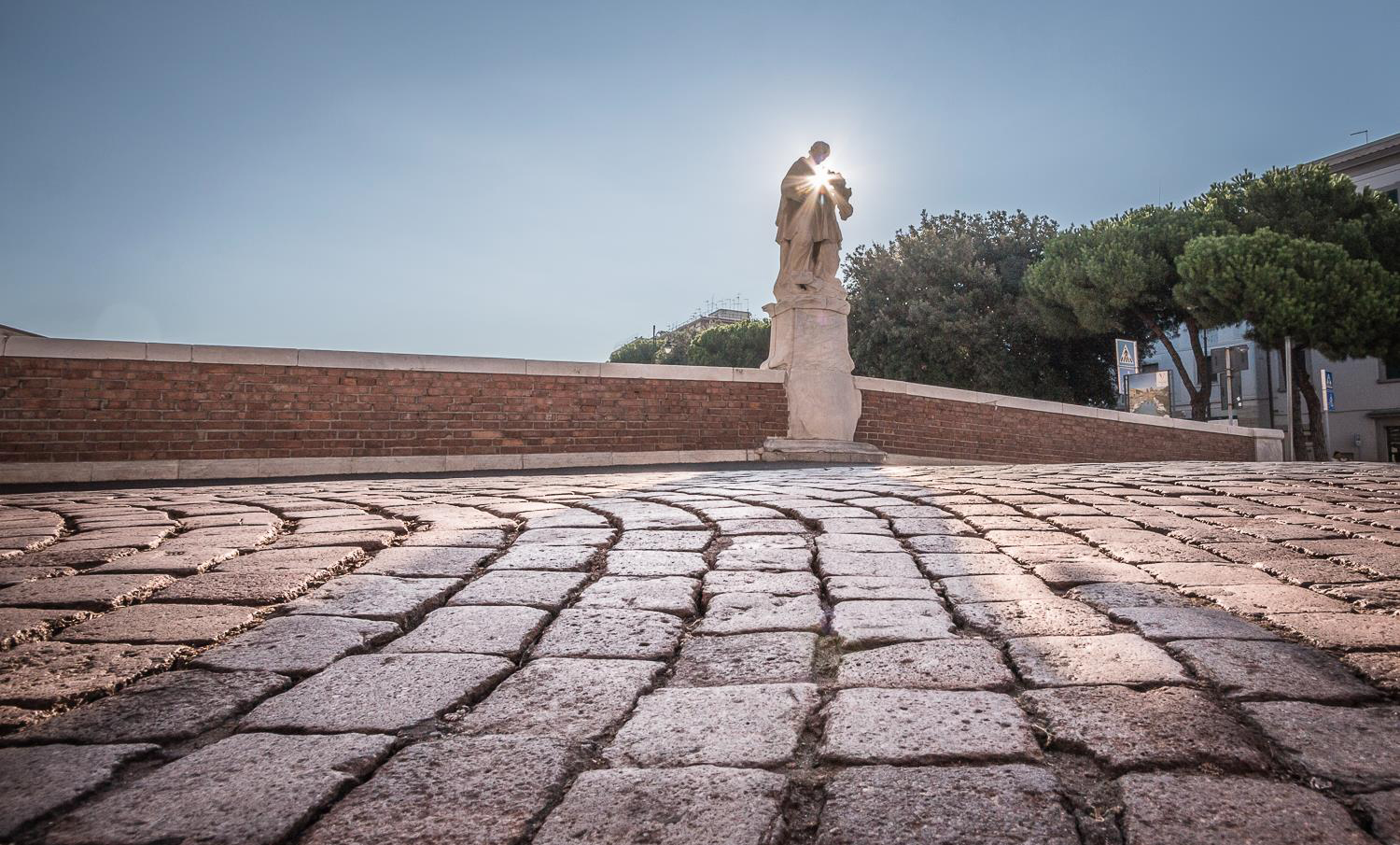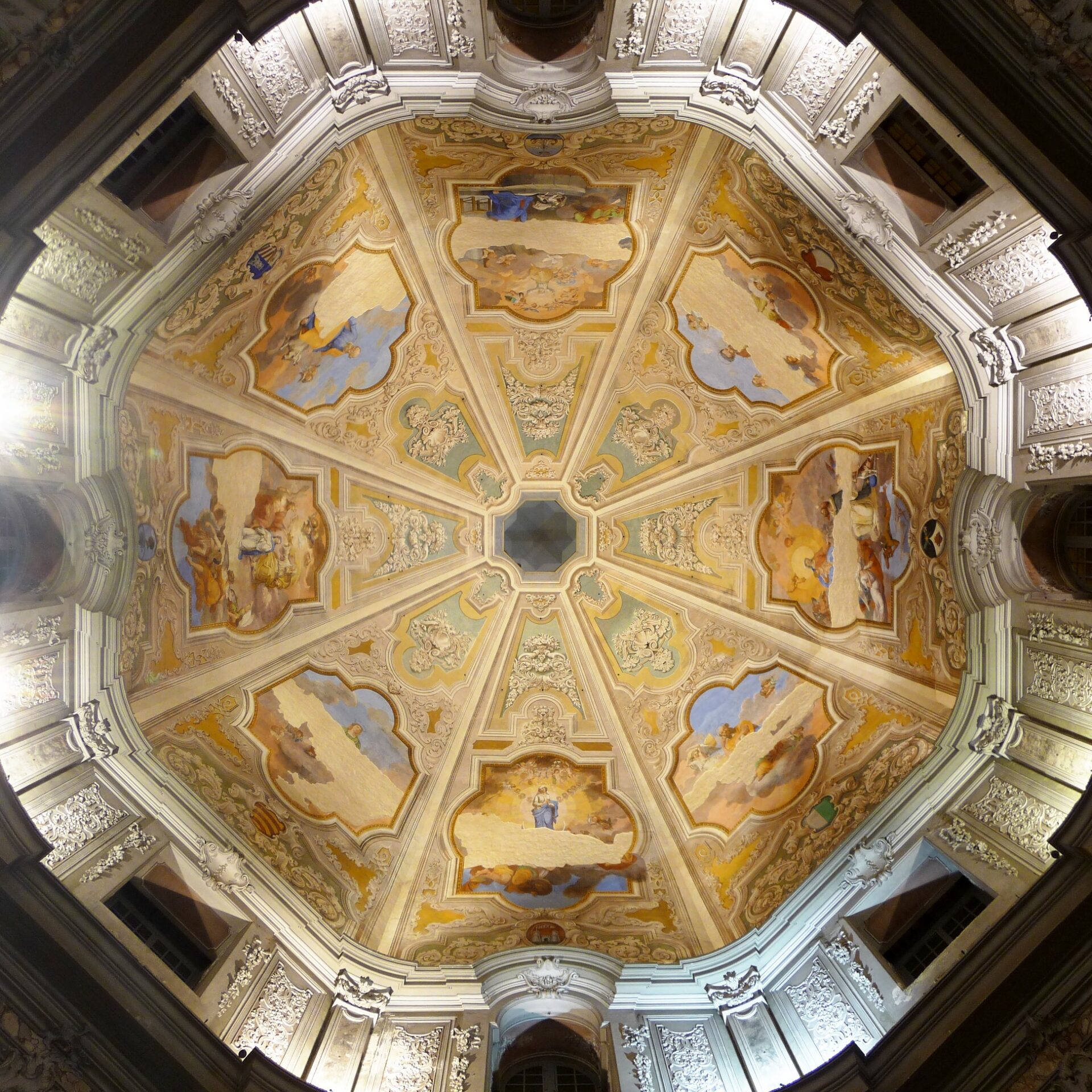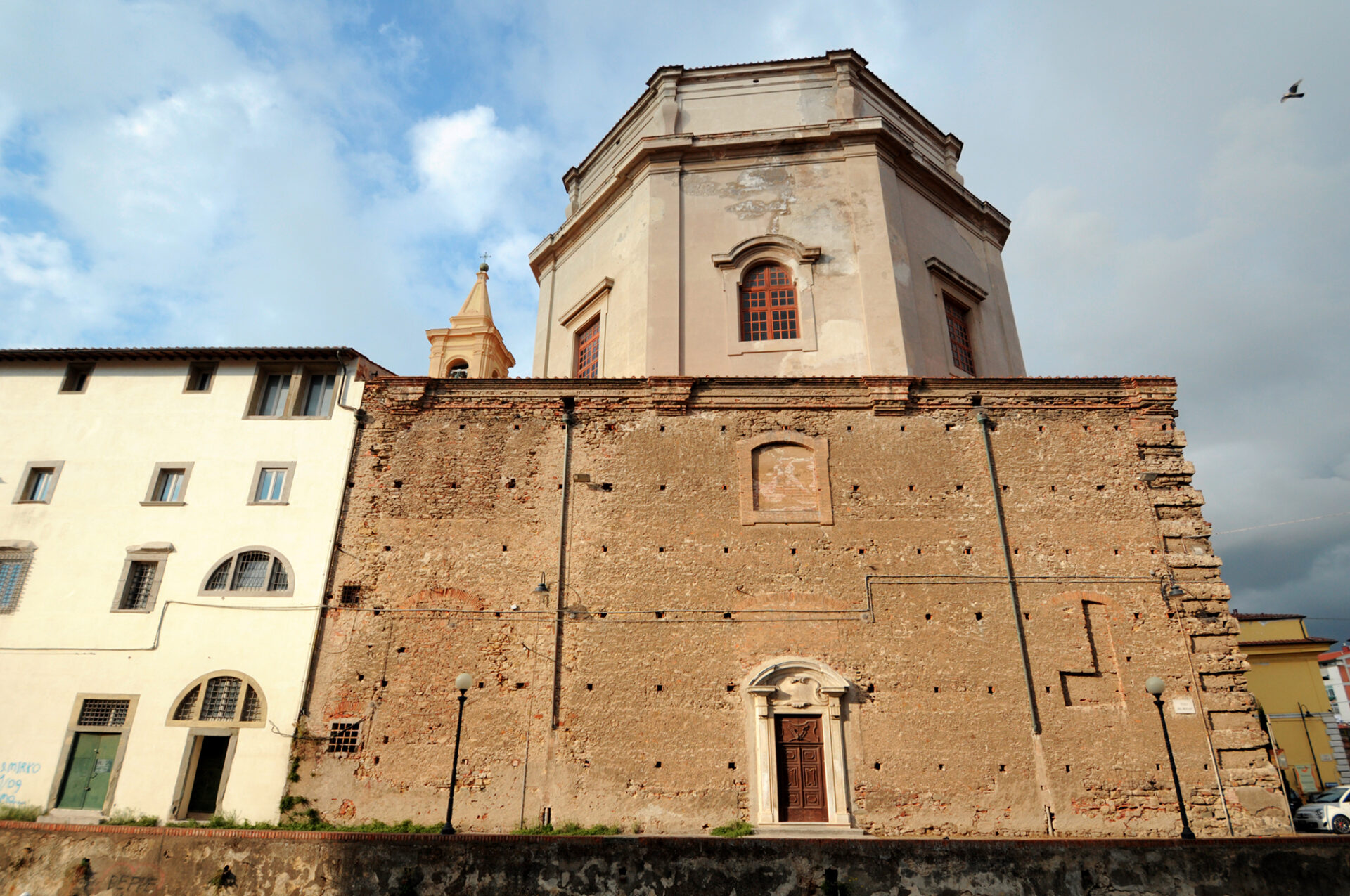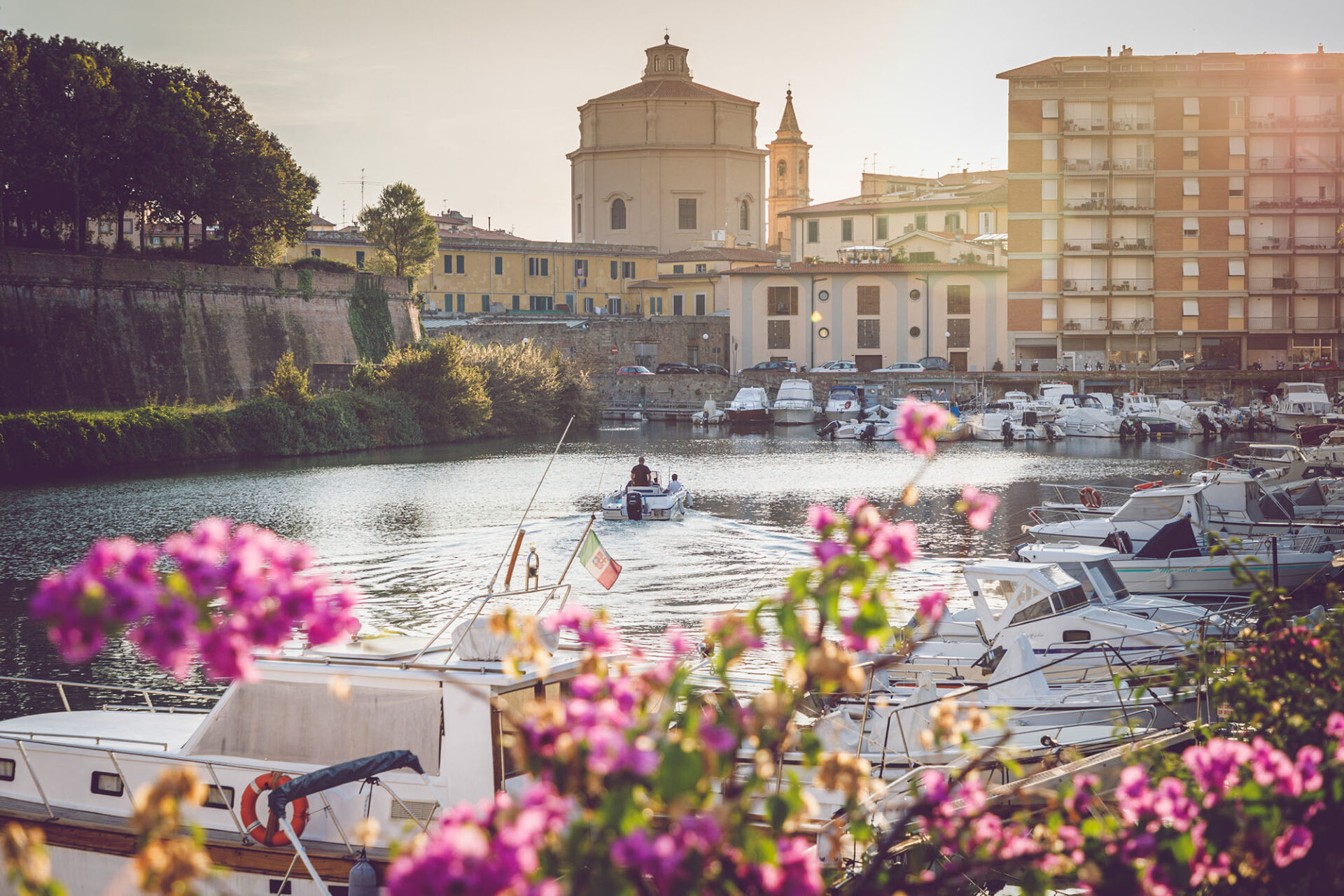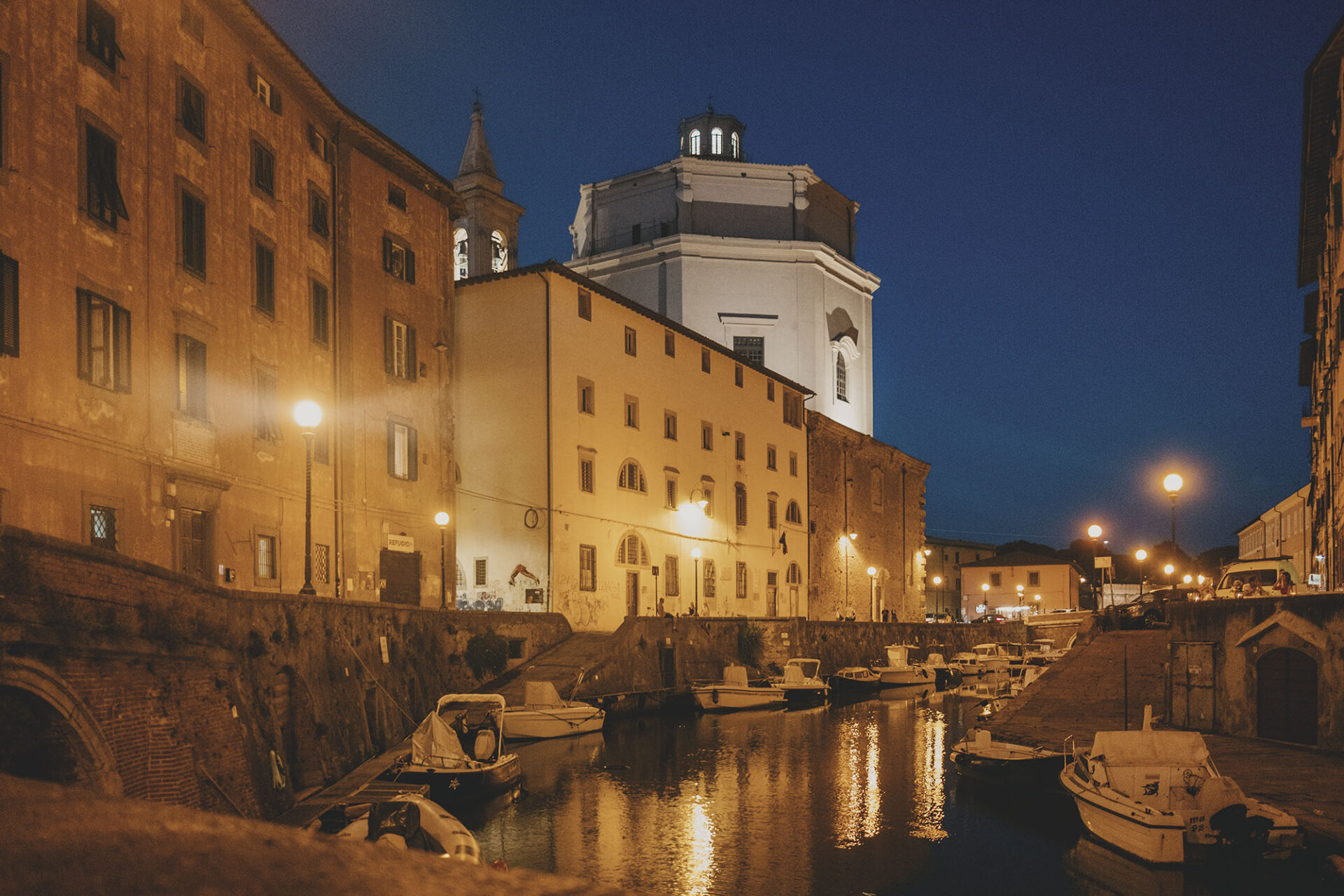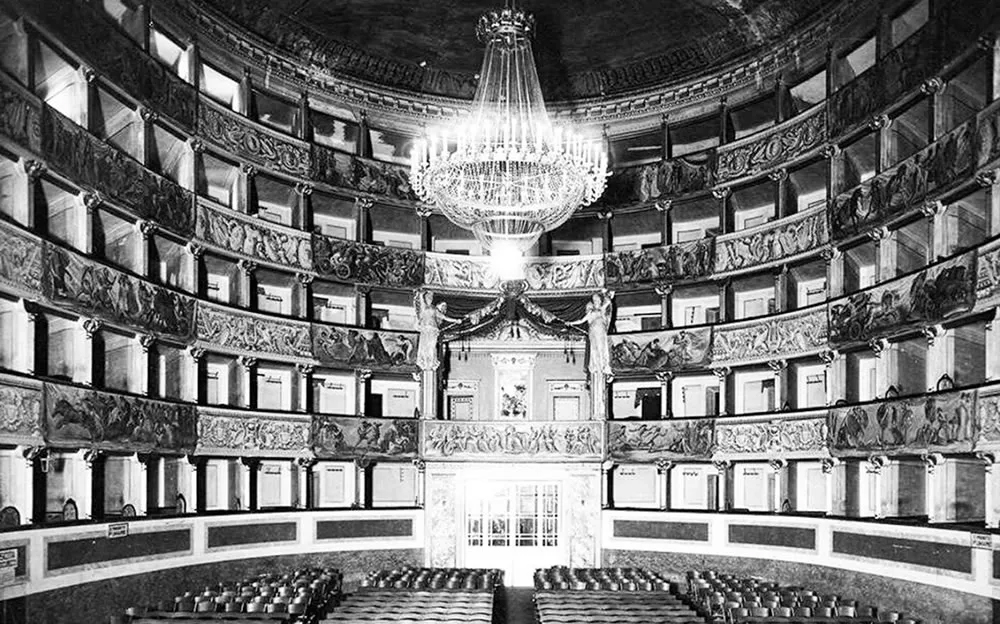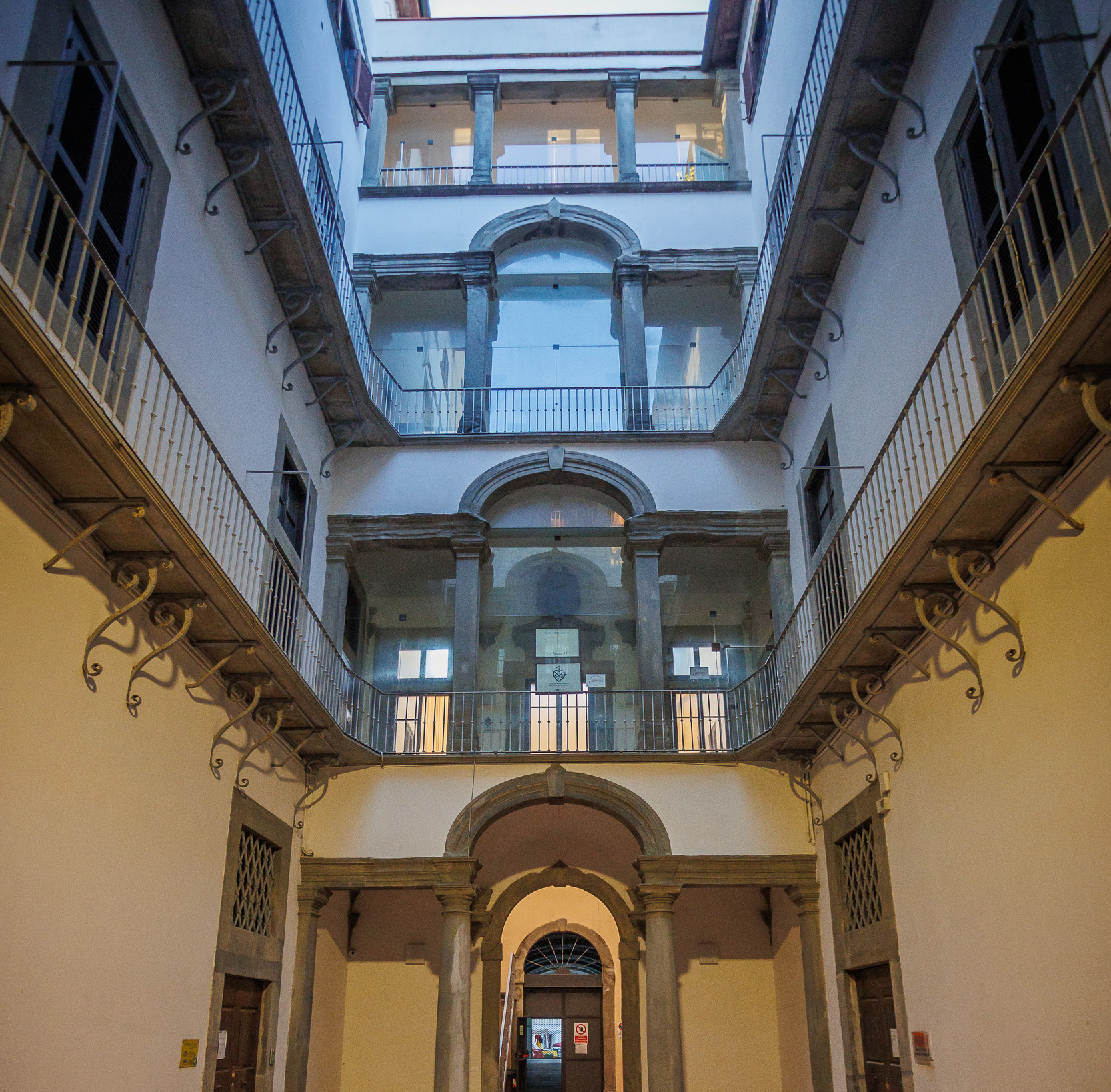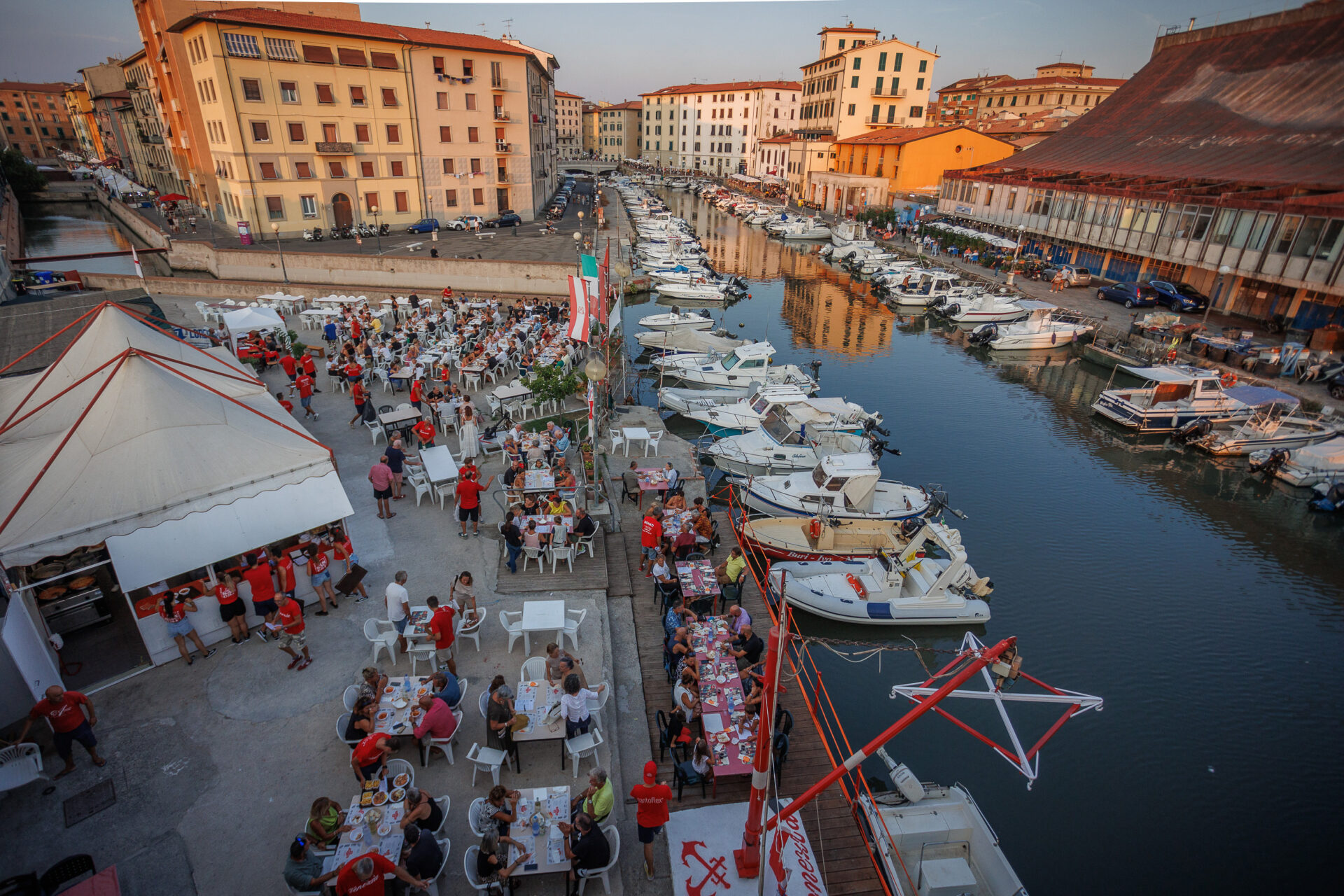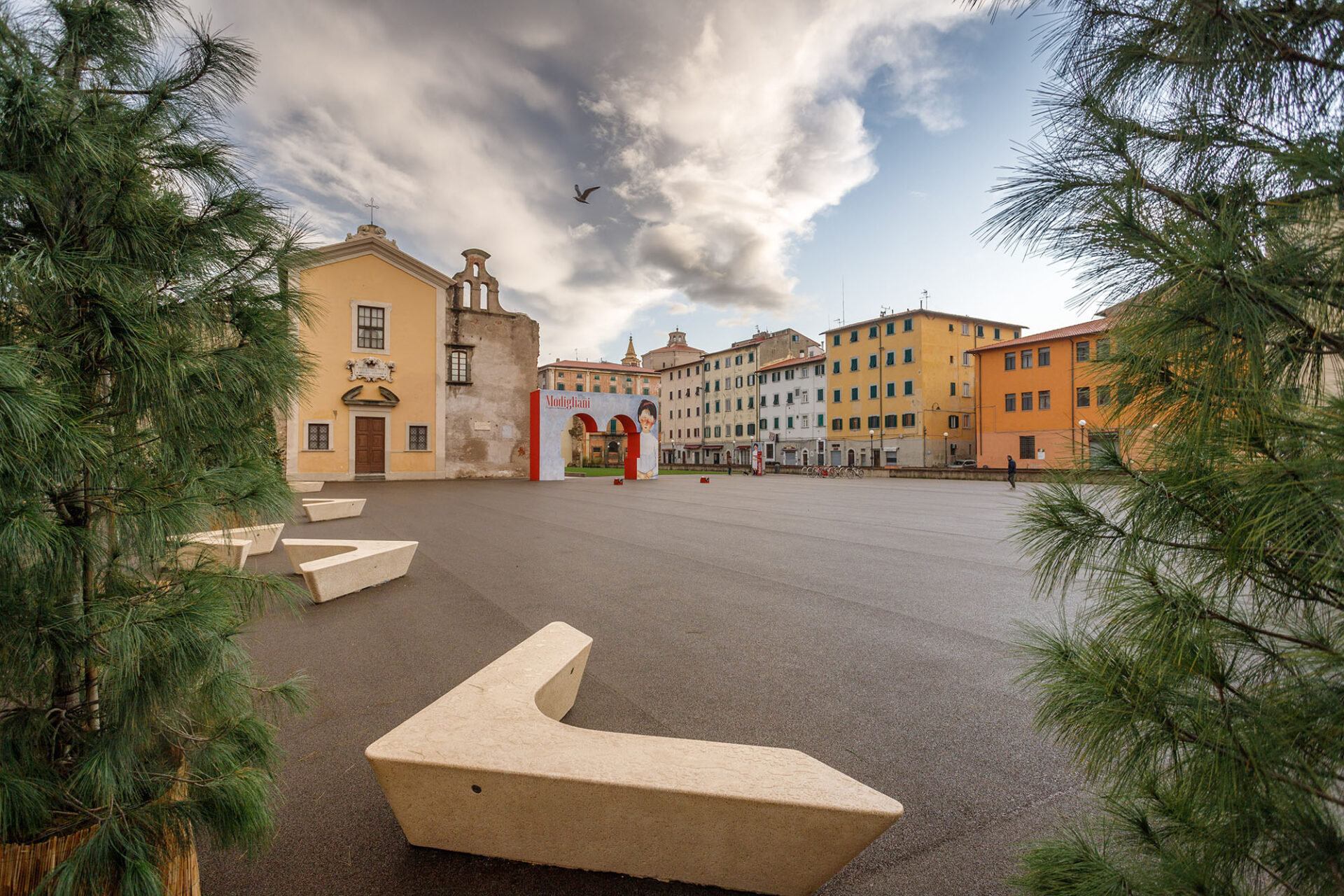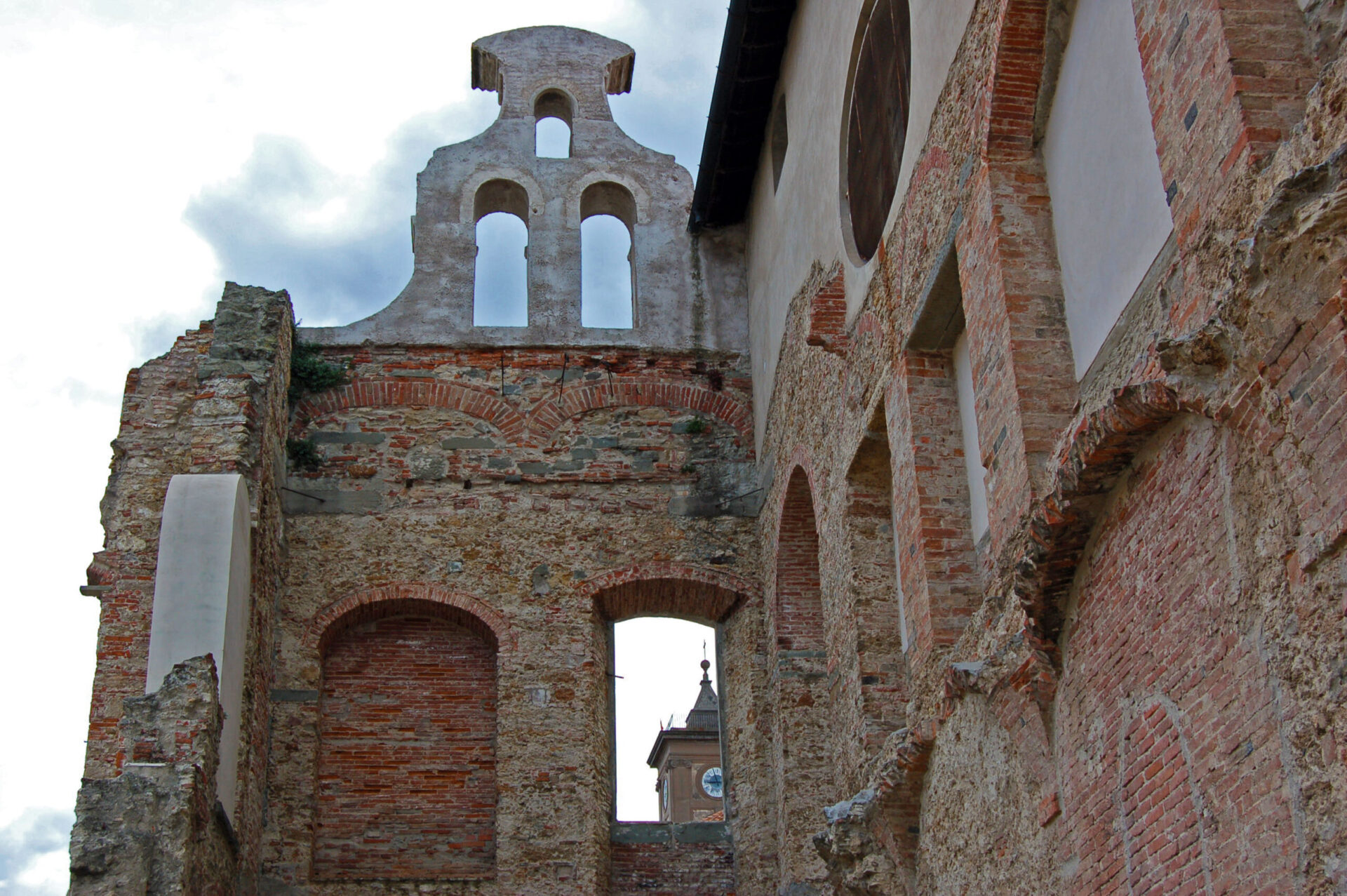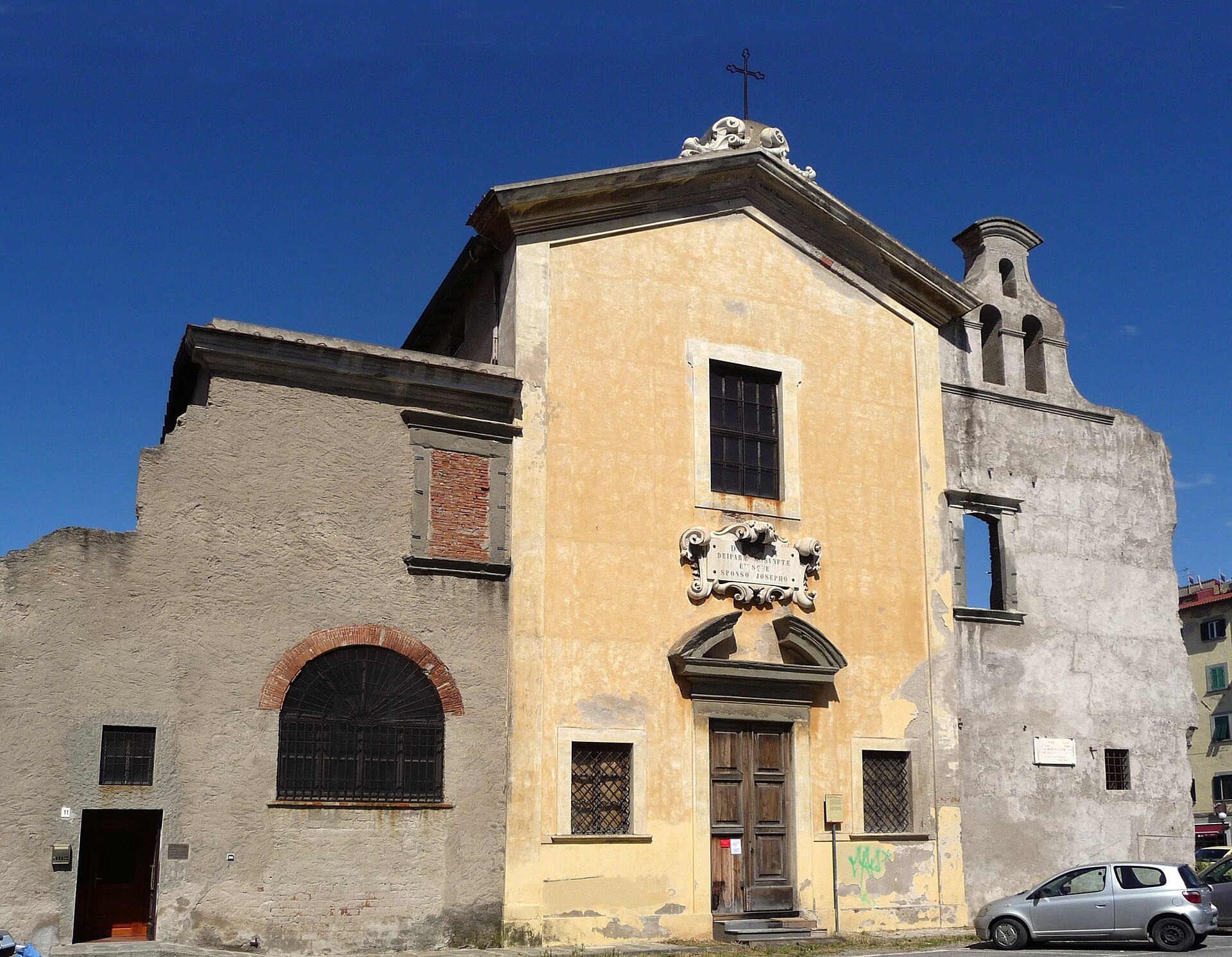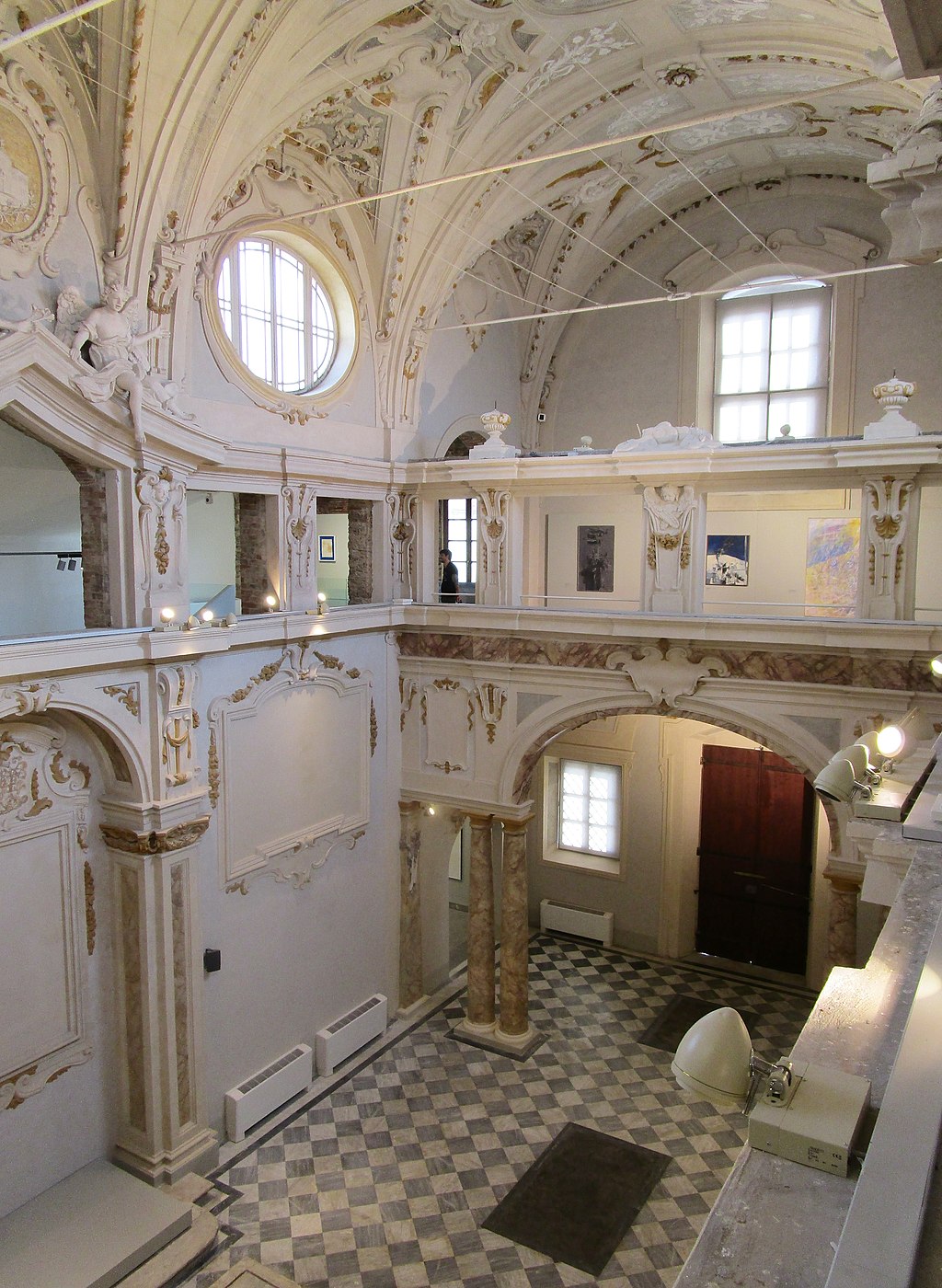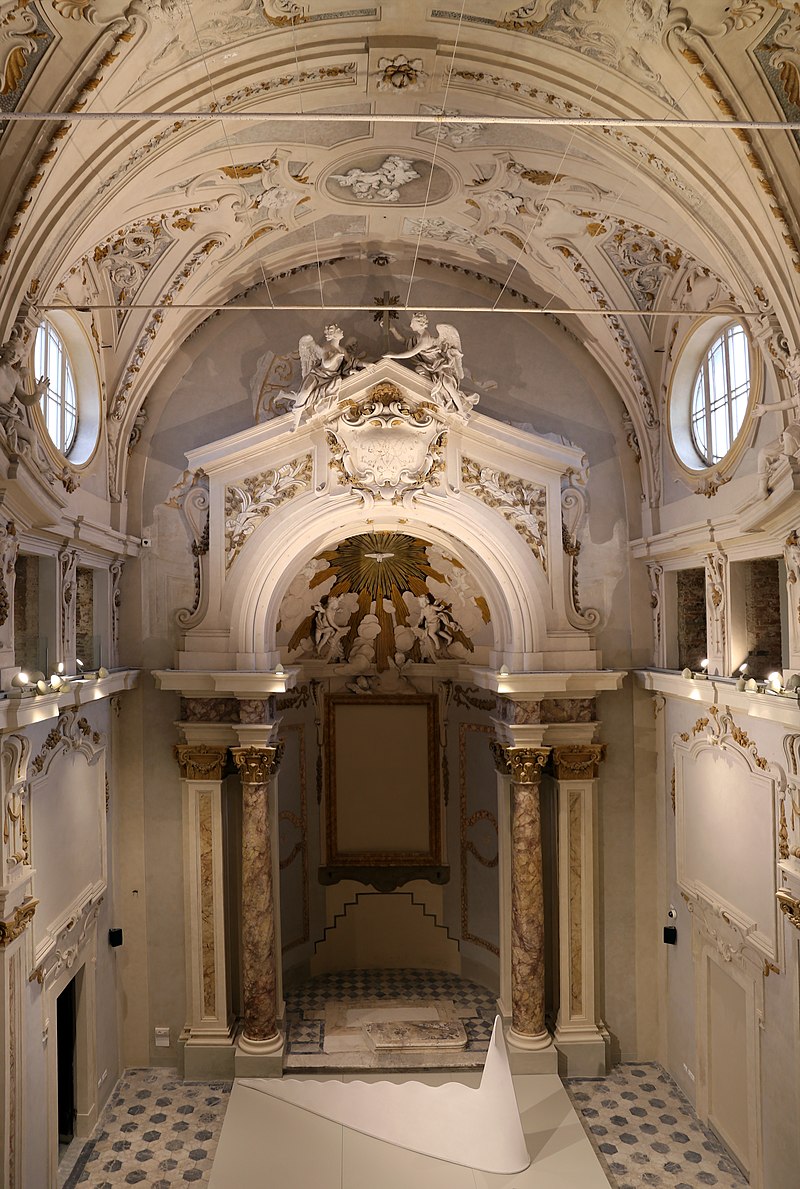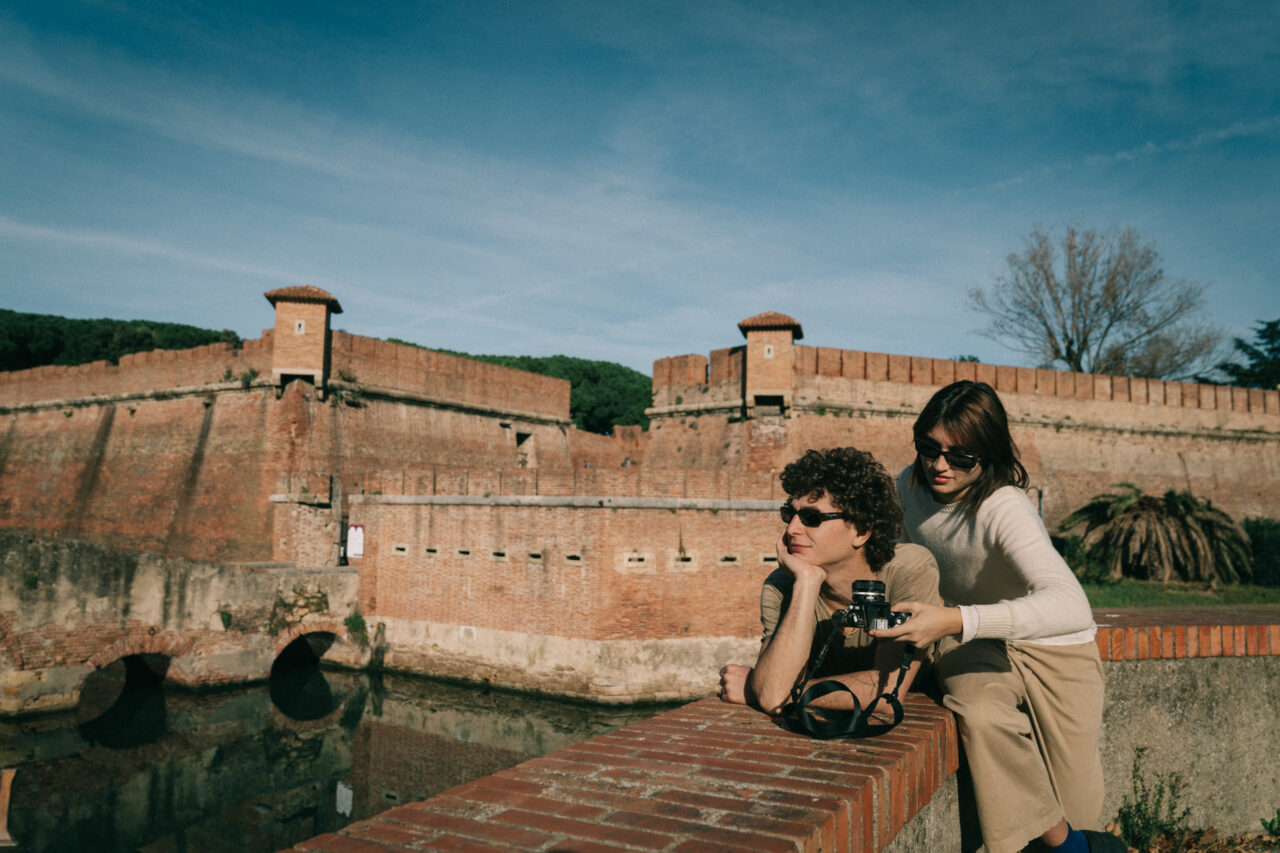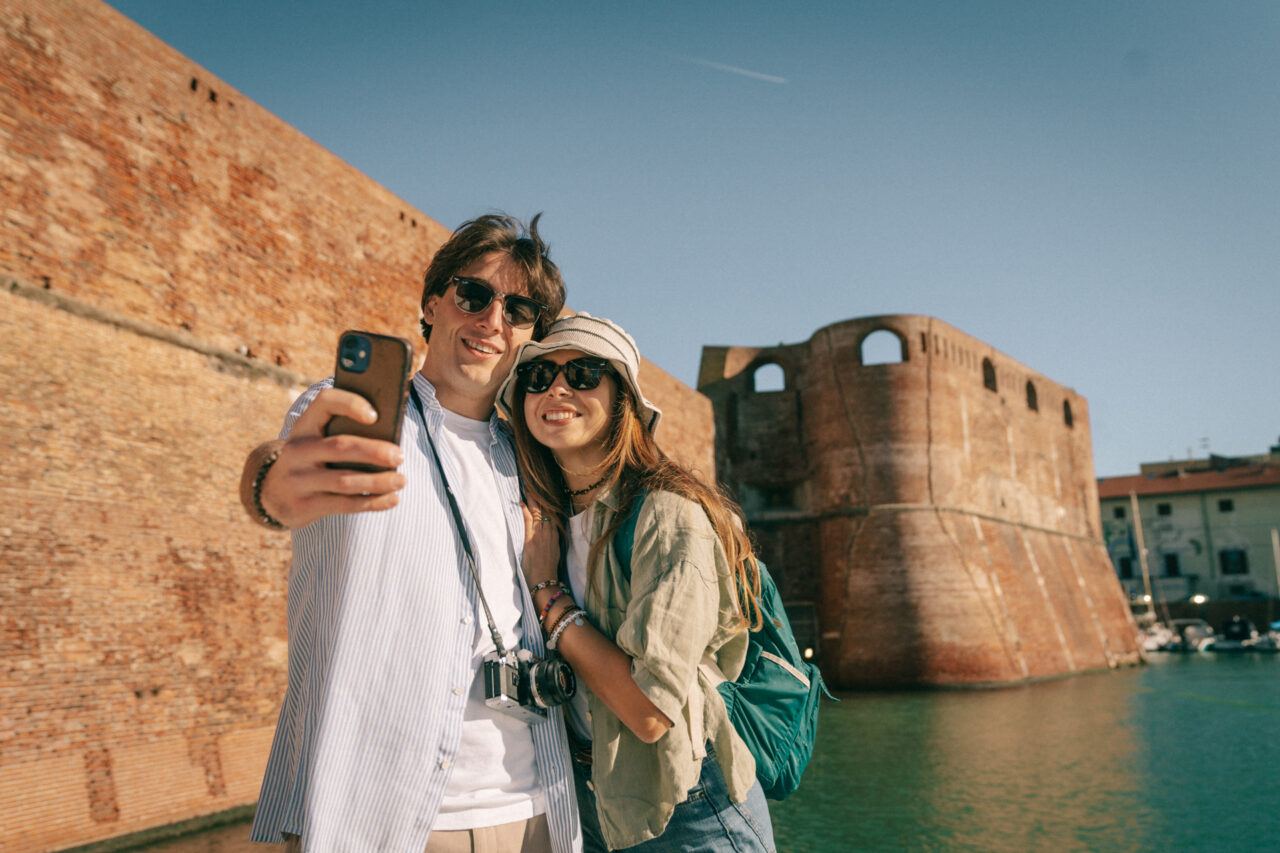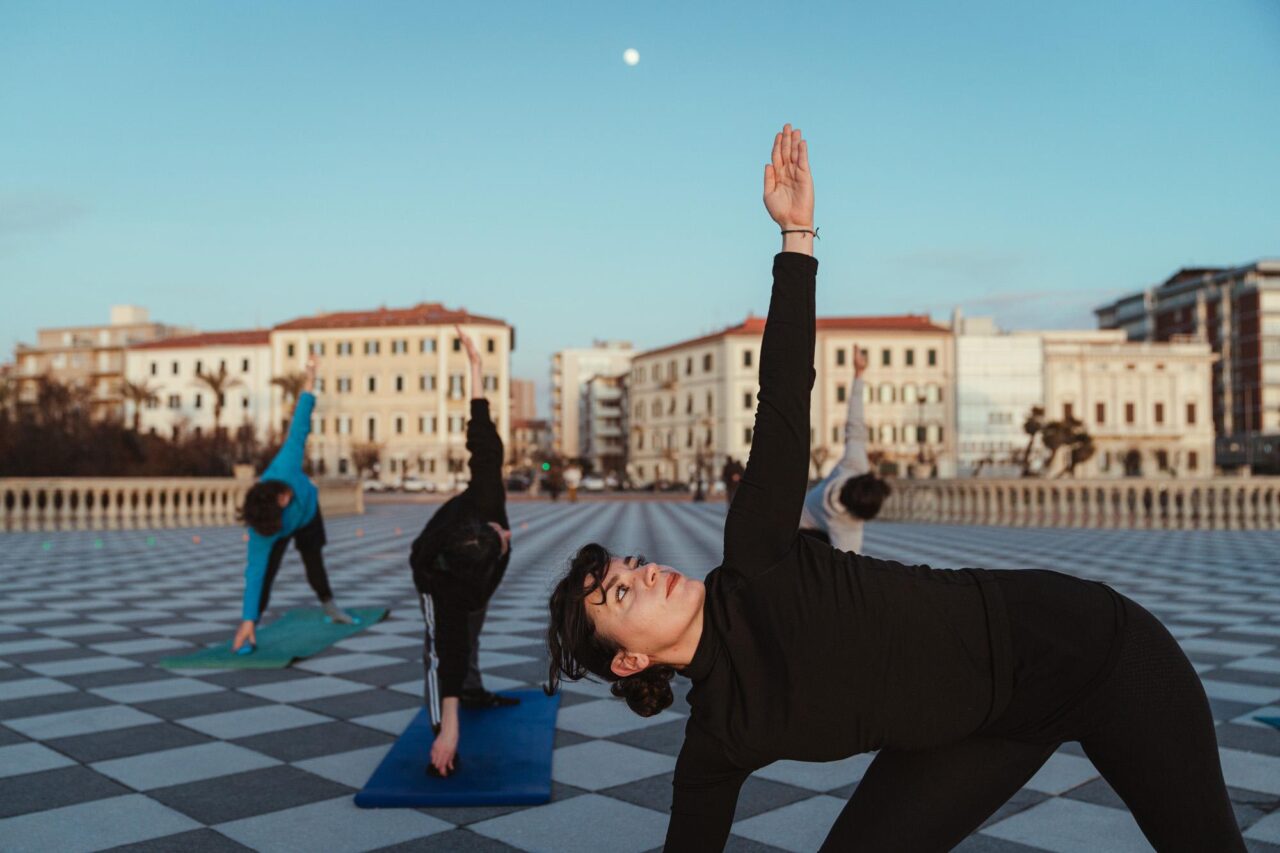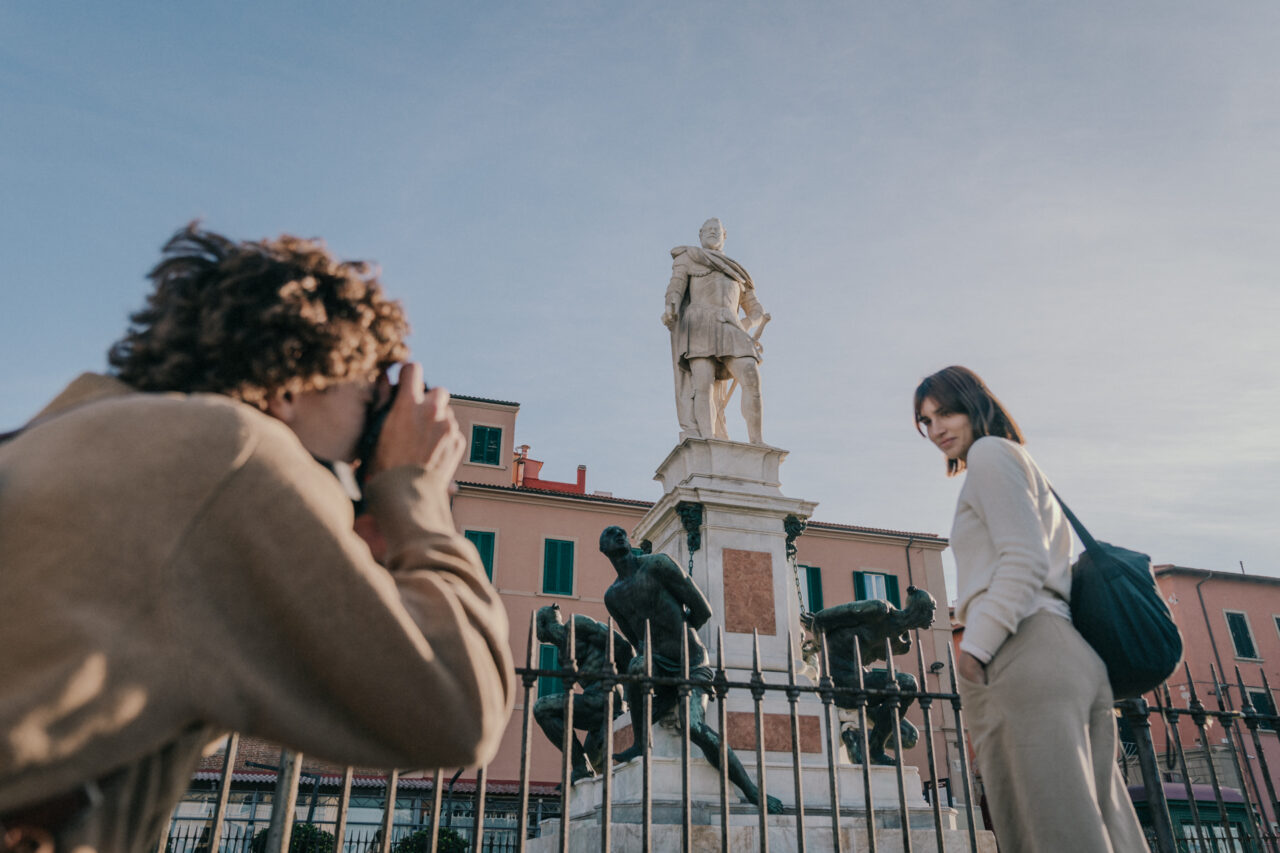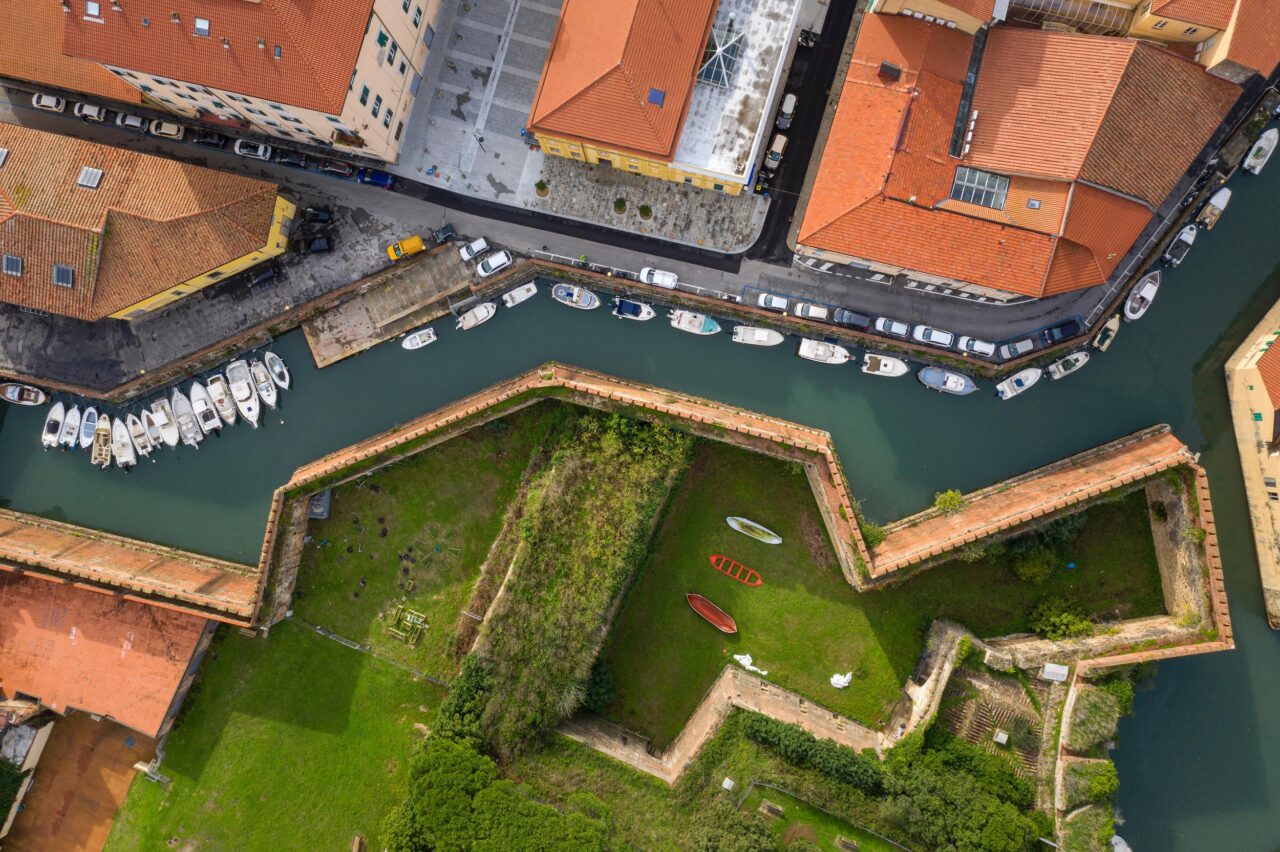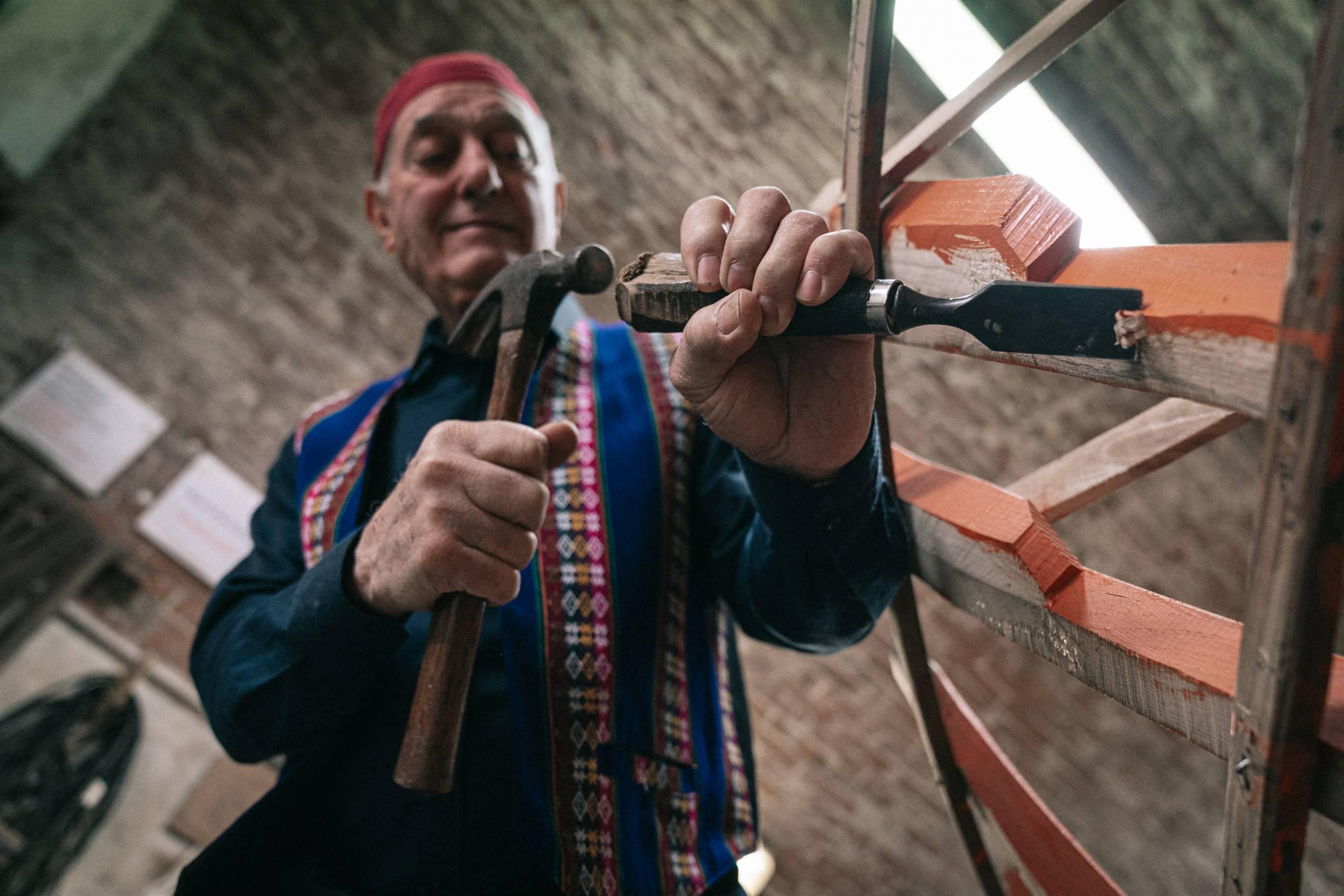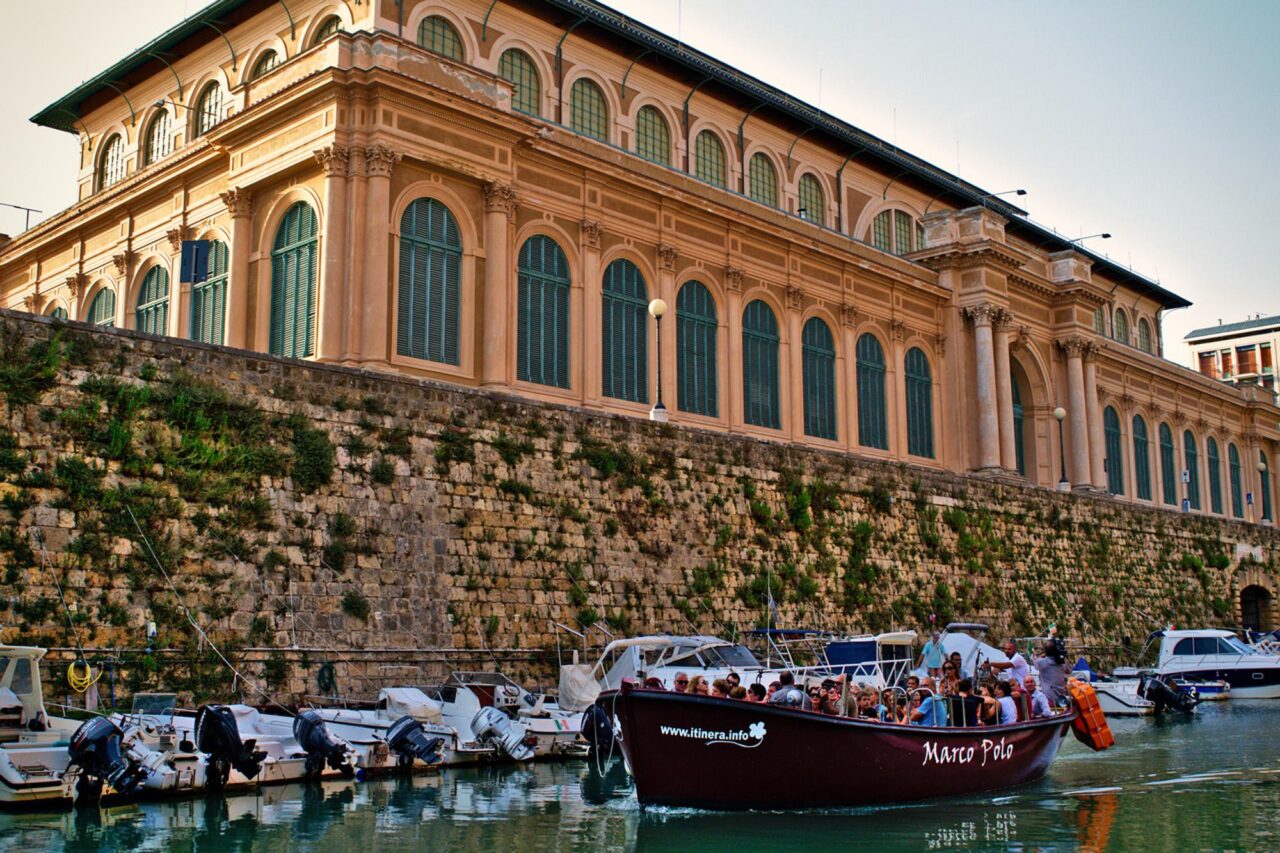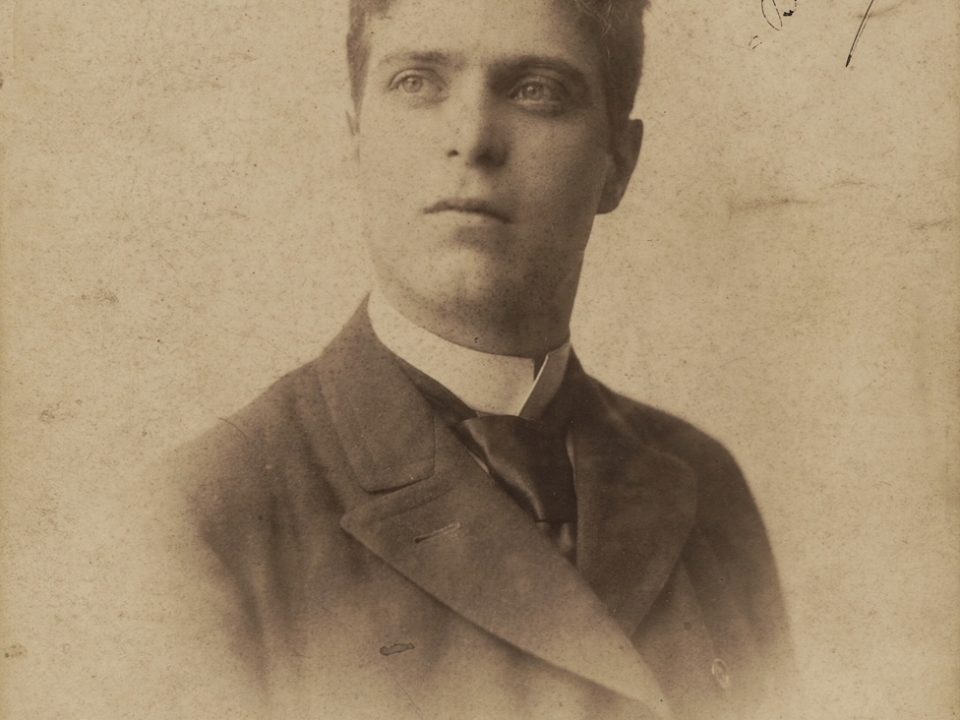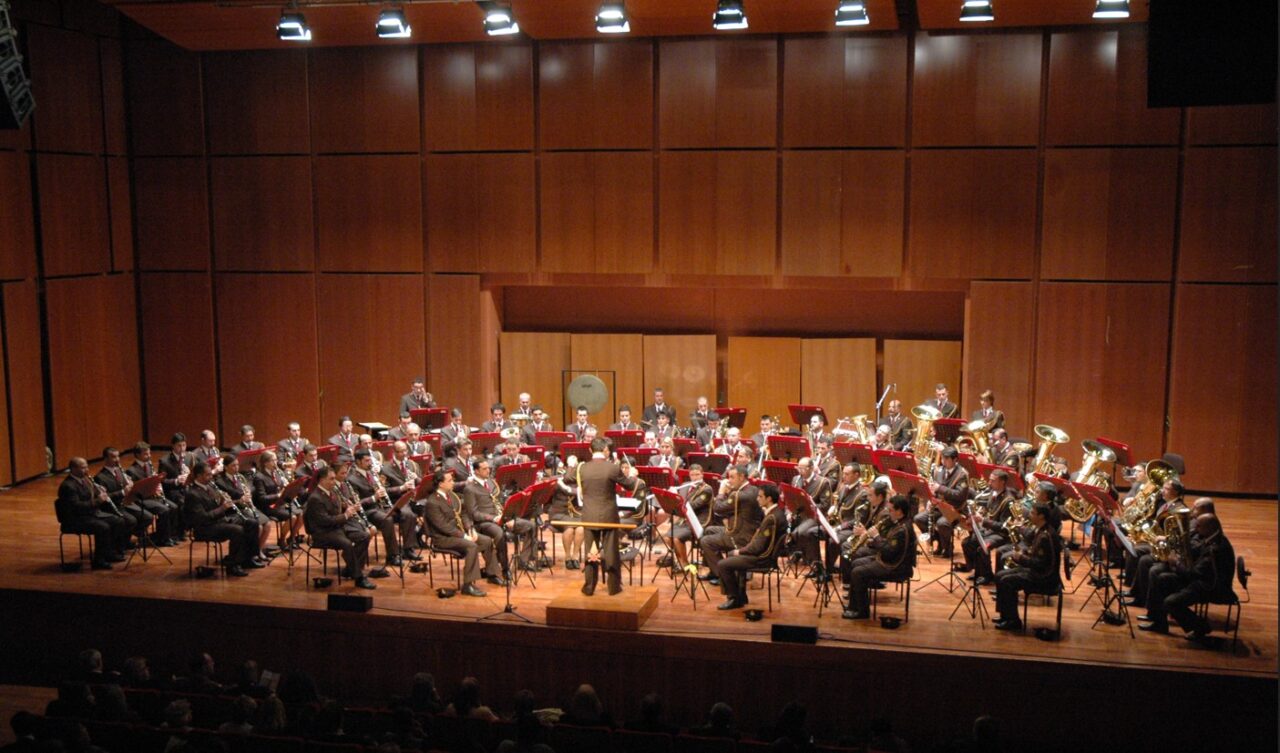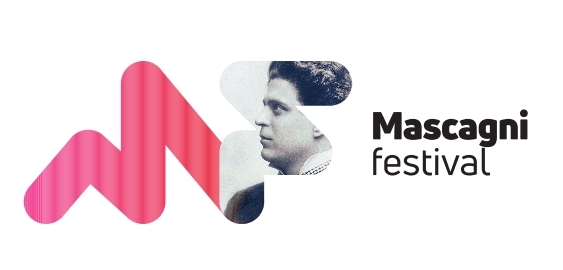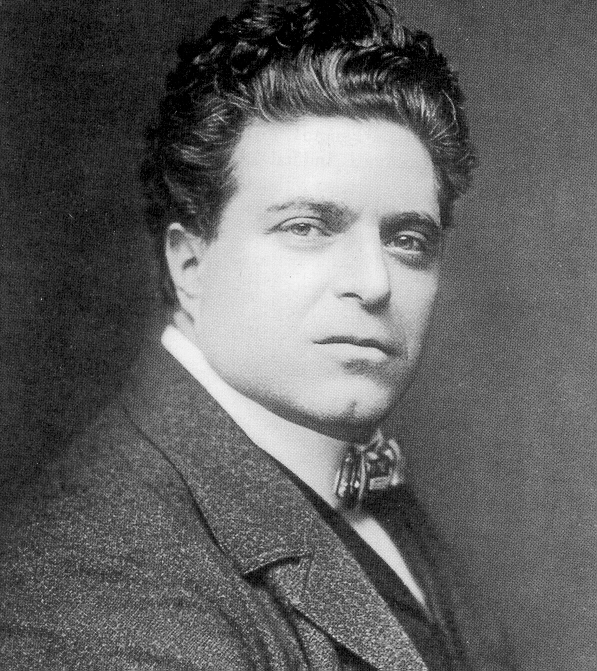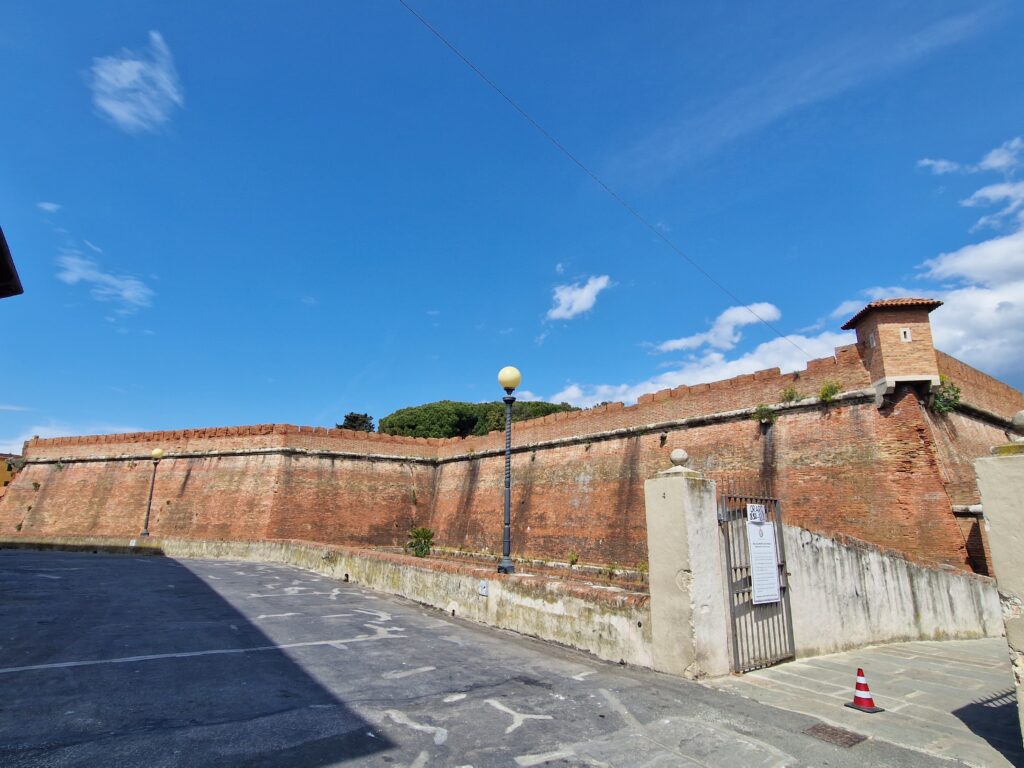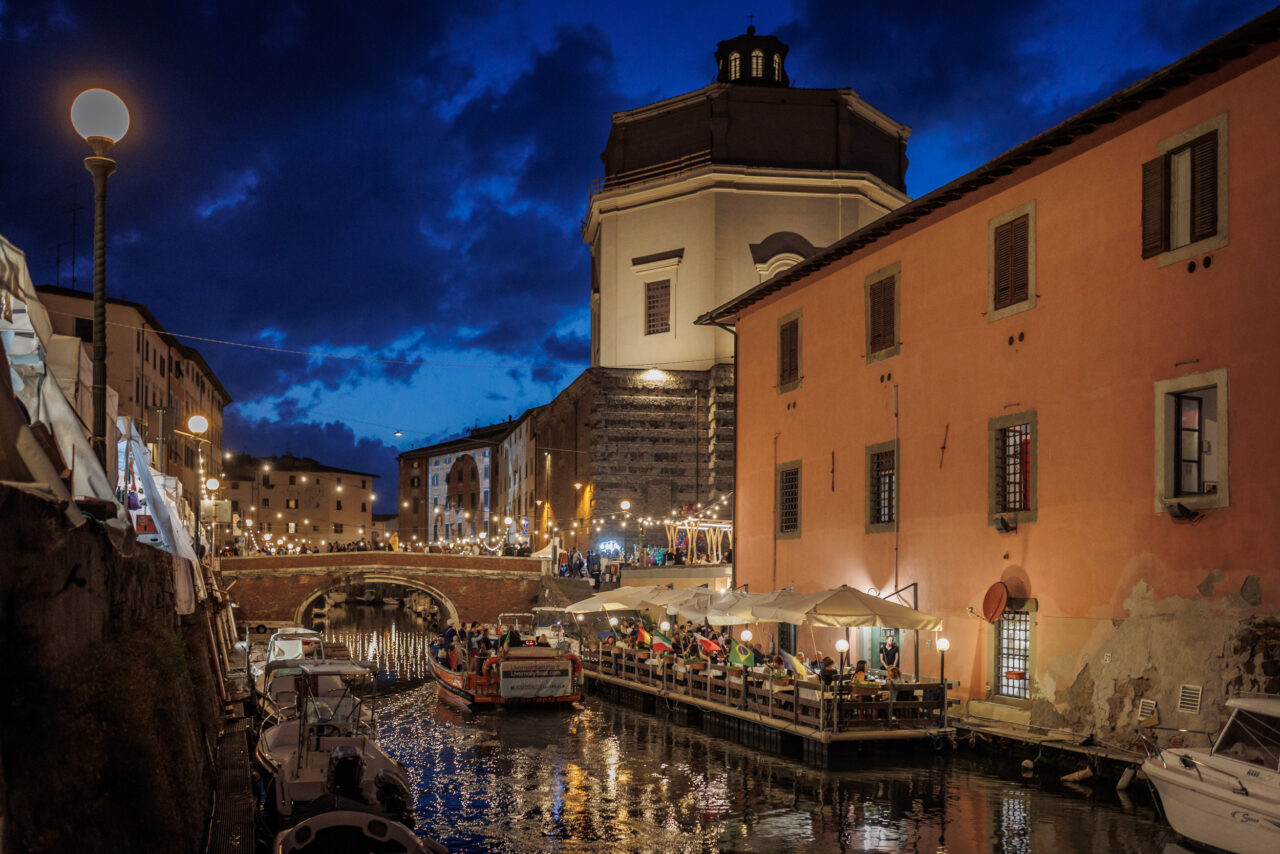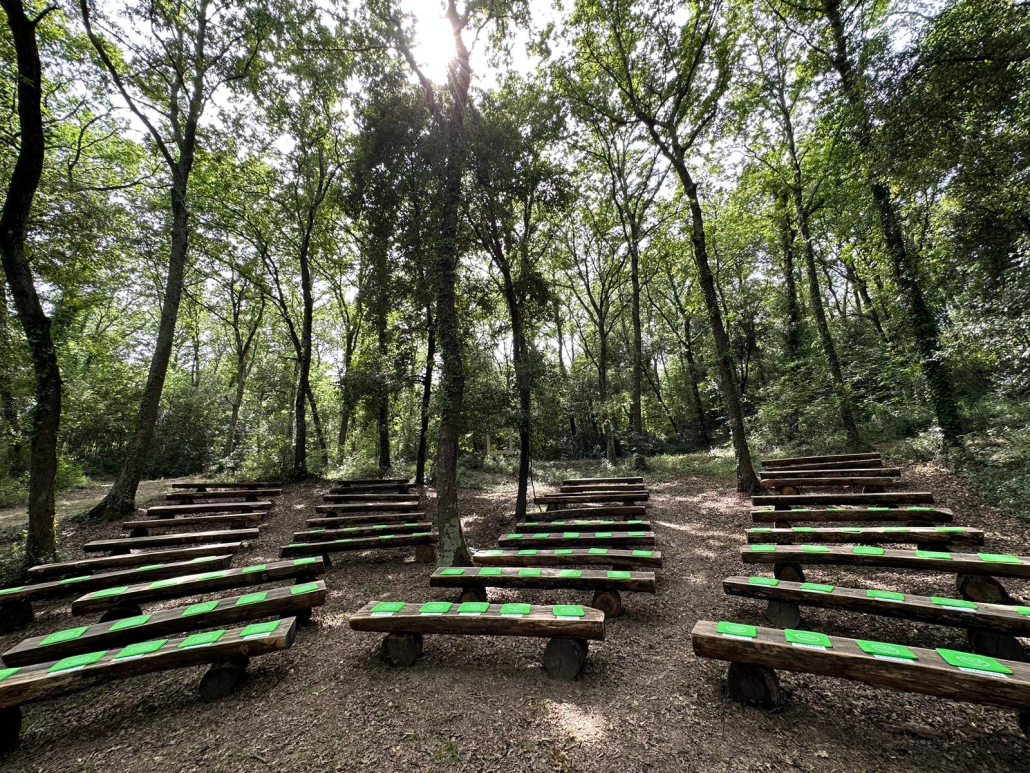The charm of a route among fortresses, bridges, and canals
In addition to the two imposing fortresses, the New Fortress and the Old Fortress, which characterize the neighborhood, there are many places of interest that you will have the opportunity to discover while strolling through Venice, perhaps the only 17th-century mercantile neighborhood built on water that has preserved its charm over the centuries.
1) The “Fossi” of new Venice: the brackish veins of Livorno
The Venezia district is an archipelago of built islands, surrounded by a vast network of canals that the people of Livorno call “Fossi”. Designed to facilitate the transport of goods from the port, they provided direct access from the sea to the warehouses of every merchant building. Each of them was in turn connected to the street level through quays and stone-paved ramps, known as “scalandroni”, from which boat trips along the canals now depart.
2) The City Museum, between history, exhibitions, and contemporary art
The Livorno City Museum offers an interesting educational journey through the city’s history, a beautiful collection of contemporary art that includes the deconsecrated Church of Piazza del Luogo Pio and the palace of Bottini dell’olio, ancient deposits for the storage of oil from which a rich public library has been created. As a venue for exhibitions and displays, the Livorno City Museum is an attraction well worth a thorough visit.
3) The Livorno Baroque of the Church of San Ferdinando
The Church of San Ferdinando, located next to Piazza del Luogo Pio, is another unfinished Livorno example of baroque architecture not to be missed. Inside stands “The Vision of Saint John of Matha” by Giovanni Baratta, a symbolic sculpture of the mission of the Trinitarian Fathers. The marble floor houses various tombstones. Behind the main altar is instead hidden the tomb of Francesco Terriesi, the main financier of the church.
4) The suggestive bridges of New Venice
The bridges are among the most characteristic architectural elements of Venice, in particular the seicento Bridge of San Giovanni Nepomuceno, which features a seventeenth-century marble monument of the saint in the center, and the contemporary Marble Bridge, on whose parapets the porters and boatmen have engraved curious graffiti and inscriptions over the centuries, in the form of ex-voto or memento.
5) The Church of Santa Caterina and its octagonal dome
The Church of Santa Caterina, whose unfinished facade was intended to be inspired by Baroque Roman style, was built starting from 1720 based on the design by Giovanni Del Fantasia and is topped by an imposing octagonal dome that, with its 63 meters in height, characterizes the skyline of the neighborhood. The church houses some valuable artworks inside, including the “Coronation of the Virgin” by Giorgio Vasari, one of the last works by the artist from Arezzo, and the 19th-century frescoes on the vault by Cesare Maffei, which, with their extension of 1,500 m2, are one of the largest frescoed spaces in all of Tuscany.
6) The remains of the prestigious Teatro San Marco
The Teatro San Marco was one of the main 19th century Italian theaters, even more prestigious and elegant than the Teatro Goldoni. Destroyed by bombings during World War II, today you can still see a part of the facade and some perimeter walls. In 1921, it hosted the founding congress of the Italian Communist Party.
7) The ancient merchant palaces, legacies of Livorno’s past
The ancient merchant palaces are another characteristic element of Livorno. During a tour of the neighborhood, take note of the most important ones: Palazzo Huigens, with its interior courtyard and elegant loggias, the Palazzo delle Colonne di marmo, created by the genius of Giovan Battista Foggini, whose majestic Baroque facade stands out on via Borra, and the 18th-century Monte di Pietà Palace, where disgraced Livornese people used to pawn their belongings. Don’t miss the Pescheria Nuova, a structure that is still visible in its original form, once used for fish sales and later as a warehouse. Furthermore, there is Palazzo Rosciano, currently the headquarters of the Livorno Port Authority, Palazzo del Refugio, built in Baroque style to accommodate Livornese male orphans, and the Palazzo dei Domenicani, originally a convent and later converted into a prison during the Napoleonic era, housing some notable prisoners, including former President Sandro Pertini.
8) The Nautical Section Venice: discovering the rowing tradition
The Cellar of the Nautical Section Venice is an authentic historical and cultural symbol of Livorno. Located inside one of the ancient pillars of the old Santa Trinità Bridge, it is one of the most successful and illustrious neighborhood cellars of the Livorno rowing tradition. True to its popular spirit, during the fascist ventennio, it was closed multiple times on the accusation of being a hideout for subversives and anarchists.
9) Piazza del Luogo Pio, the agora of the Venezia neighborhood
As a result of an important urban redevelopment project, Piazza del Luogo Pio is now one of the most characteristic open spaces in Venezia Nuova. You will recognize it at first sight for the presence of a large and modern three-dimensional arch that serves as the ideal entrance to the Museo della Città. Alongside the moat of Viale Caprera, it is the agora of the neighborhood where, in addition to the Museum and a series of restaurants to be enjoyed, there are also two churches beloved by the people of Livorno: the baroque church of San Ferdinando, a true place of worship for the “Venetian” residents, and the 18th-century chapel of the Luogo Pio.
10) The Church of Luogo Pio, a blend of Baroque and contemporary
Constructed between 1713 and 1715 according to the design by the grand ducal architect Giovanni del Fantasia, the Church of Luogo Pio once served as the place of worship for a female orphanage of the same name, which was destroyed after the Second World War. Its gabled facade, adorned with a small bell tower now without bells, adds simplicity and formal purity to the design of the square that will astonish you. Now deconsecrated and an integral part of the Museum of the City, it houses today a precious piece of its contemporary art collection: the Great Reptile by Pino Pascali. Apart from the value of the artwork, let yourself be captivated by the contrast between the contemporary rigor of the sculpture and the richness of the Baroque stuccoes: a truly interesting and suggestive placement that will amaze you.
Useful informations
-
Who:
Alone, Children and families, Groups, In pairs, With friends
-
When:
Autumn, Spring, Summer, Winter
-
What:
-
Other characteristics
Indoors, Outdoors, Reachable by public transport, Without reservation
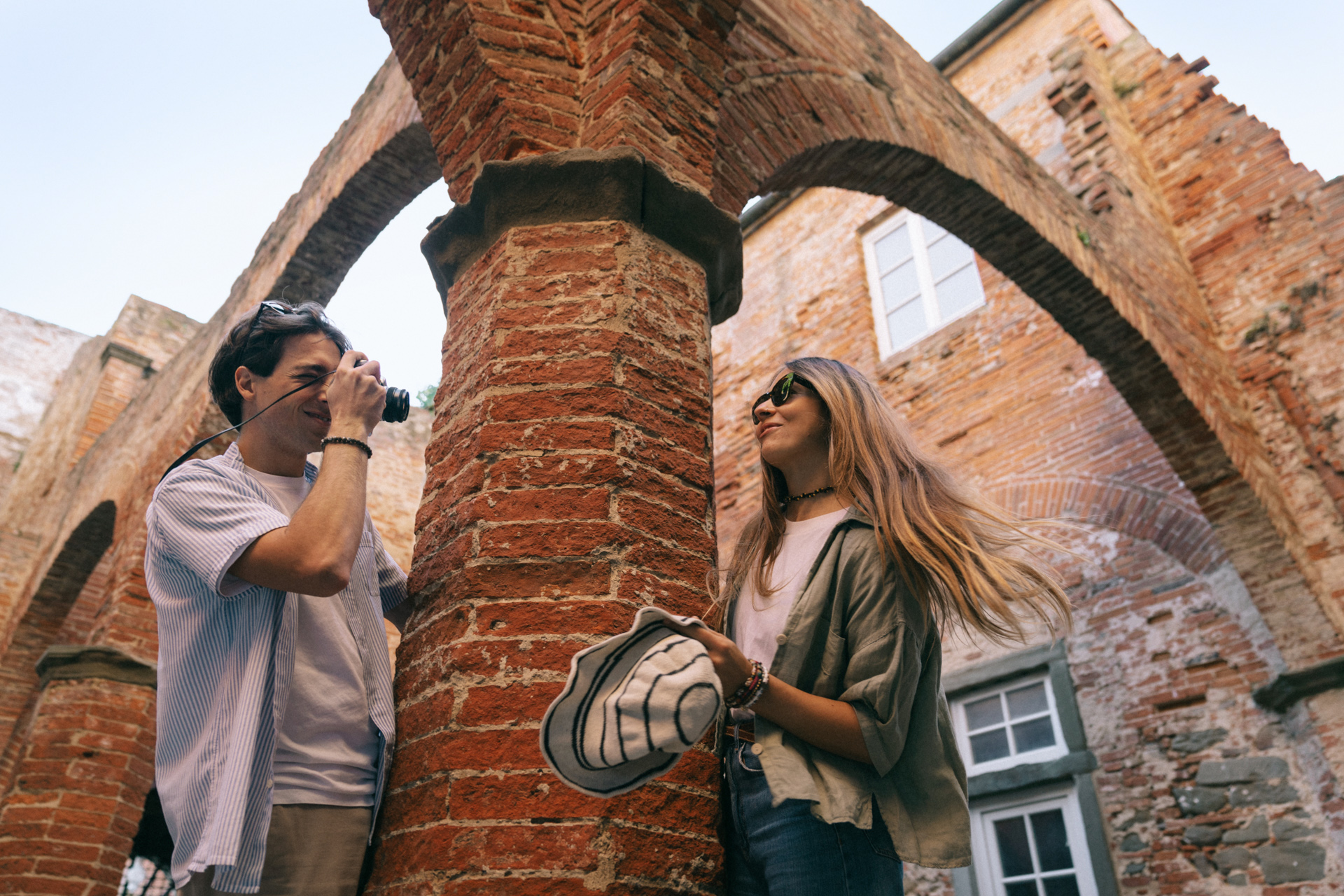
The unexpected Tuscany
Discover all the peculiarities that make Livorno so unique and surprising.
Discover more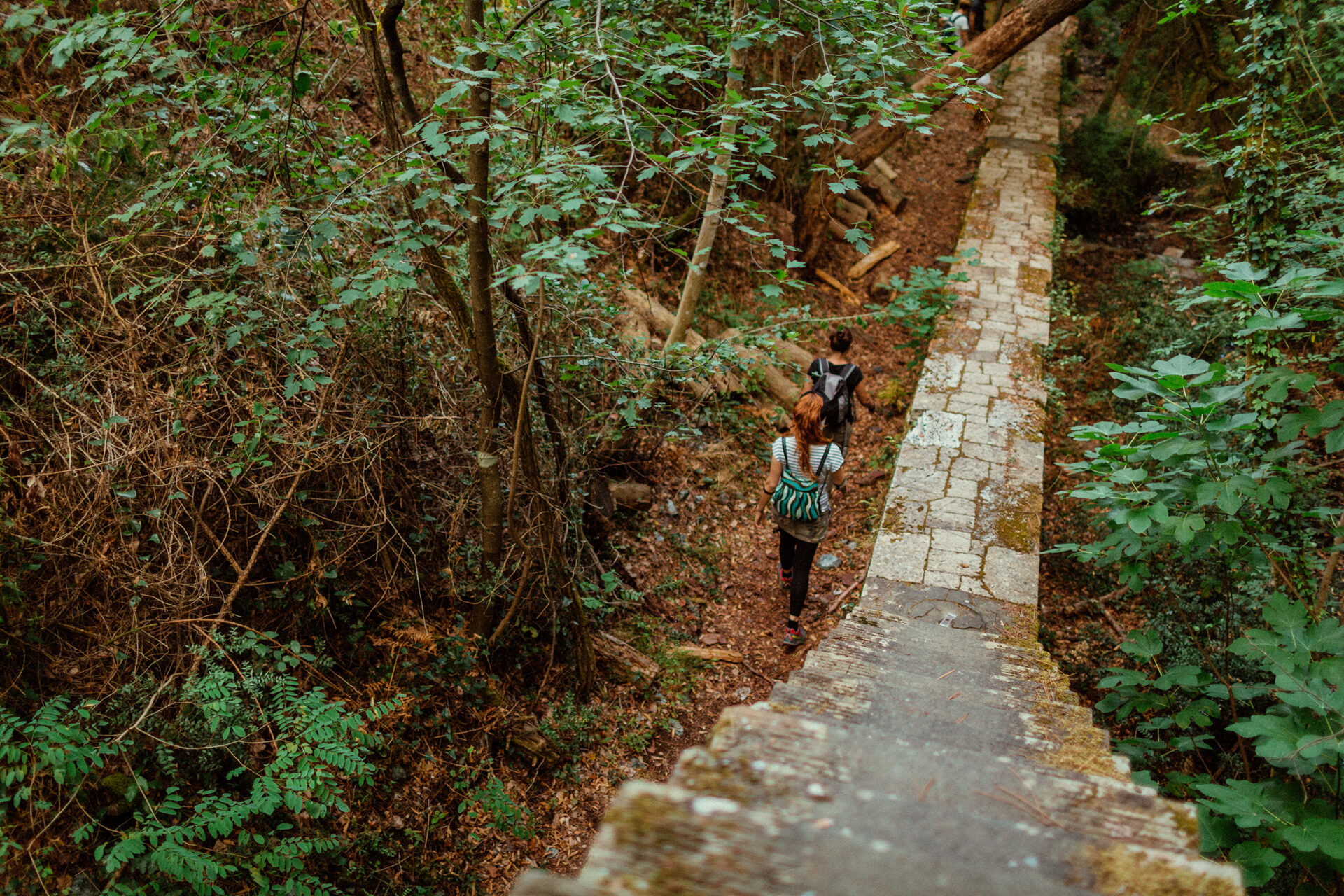
Subscribe to the newsletter
to stay updated
Don't miss any news about events in Livorno and surroundings.
